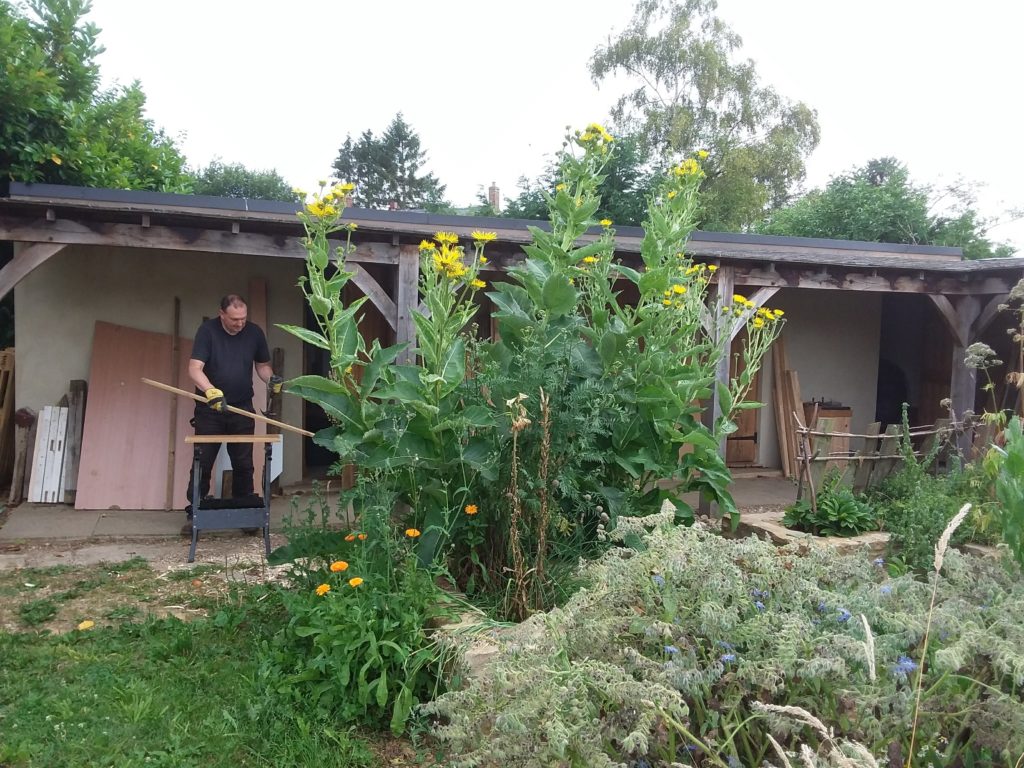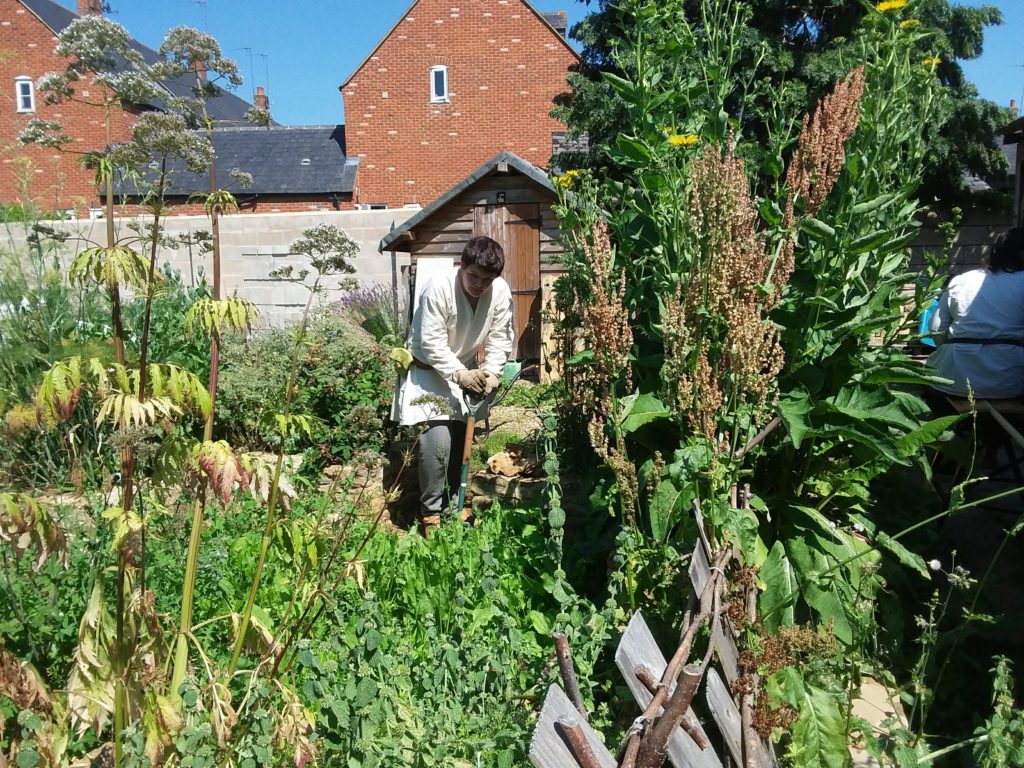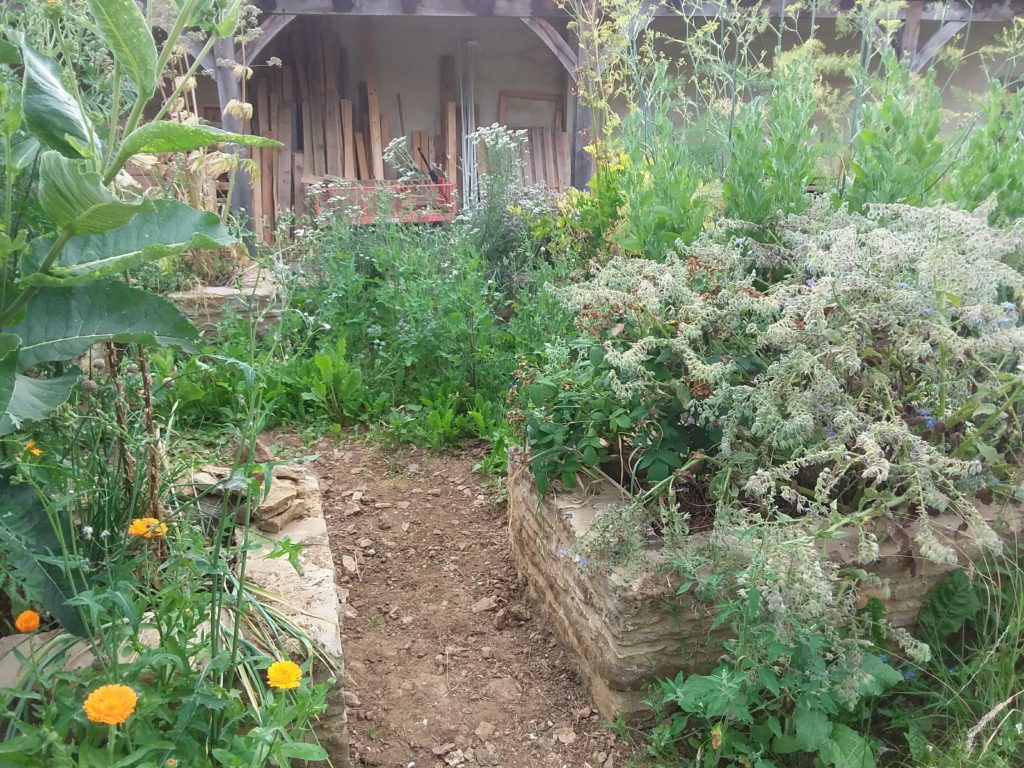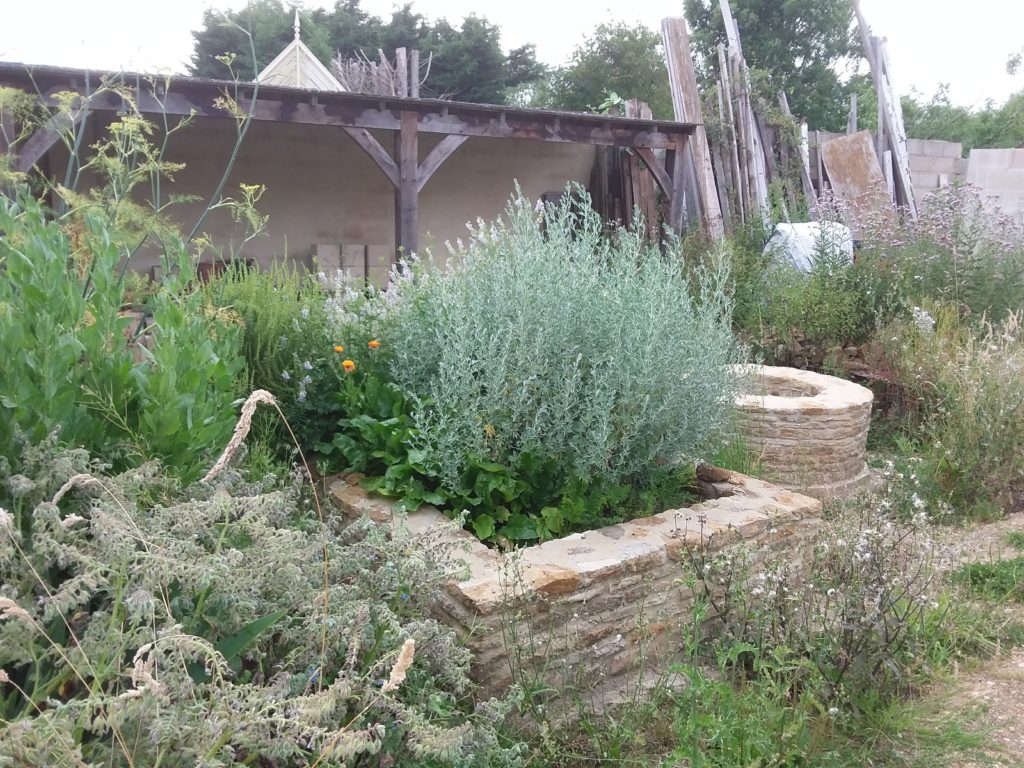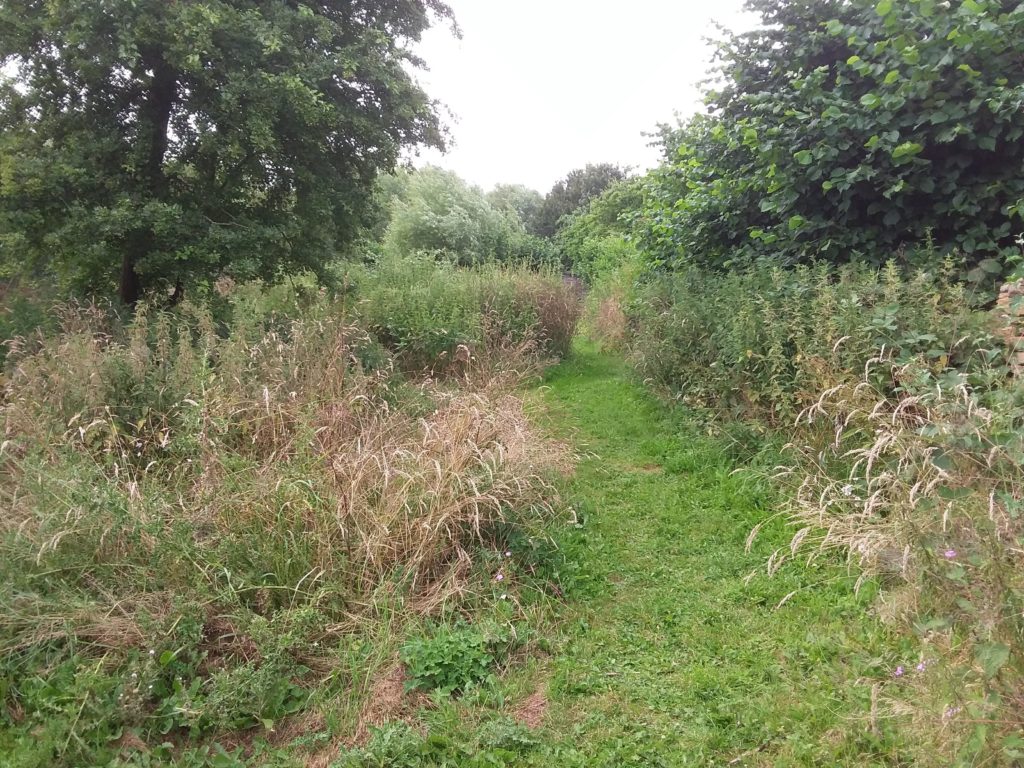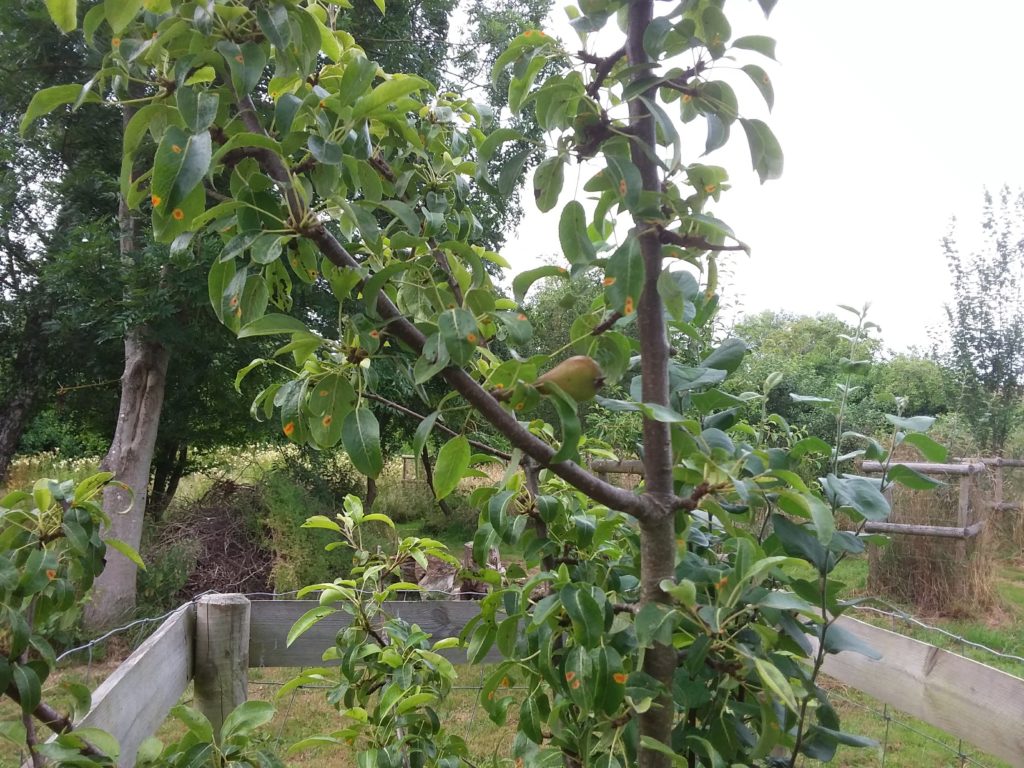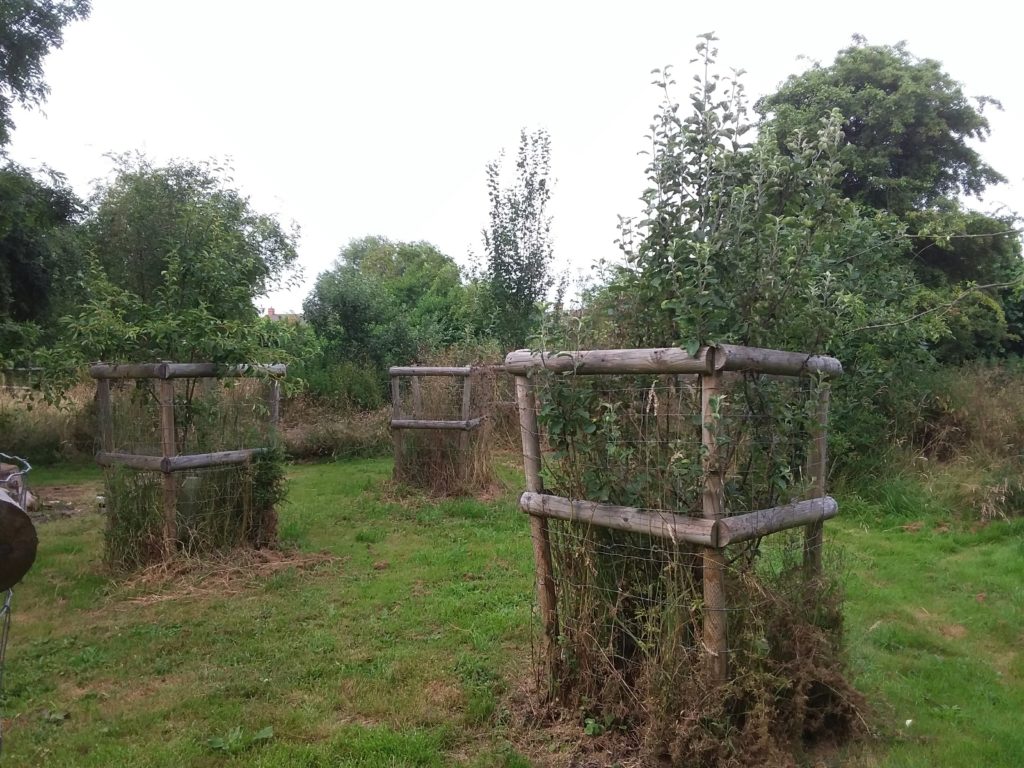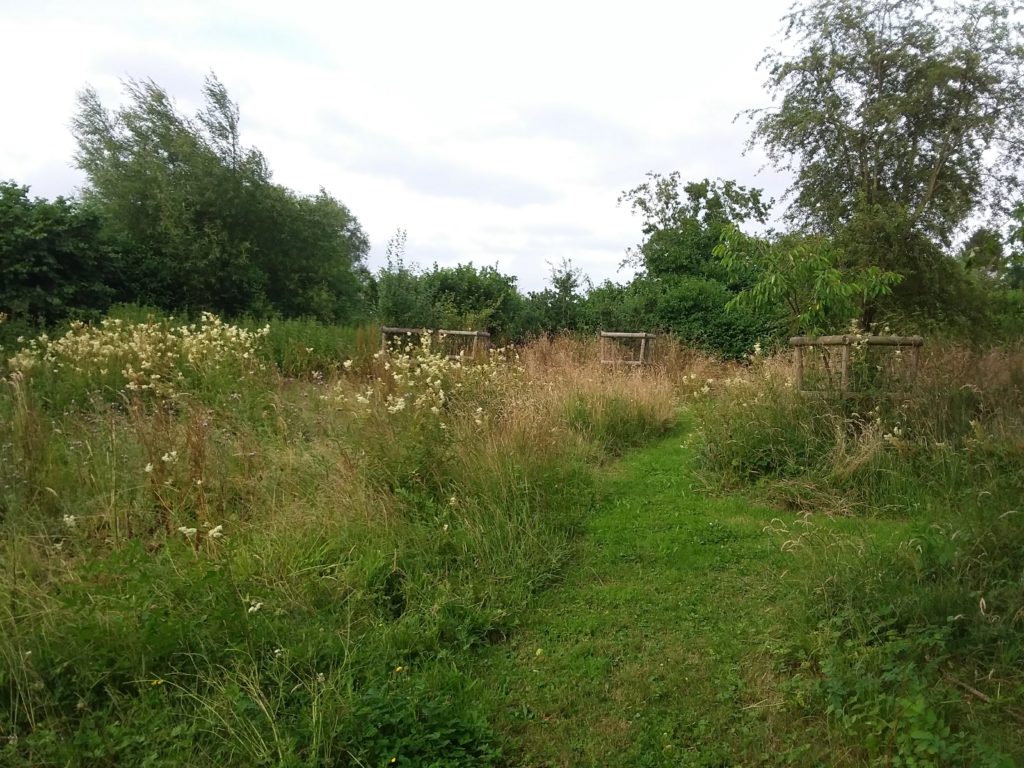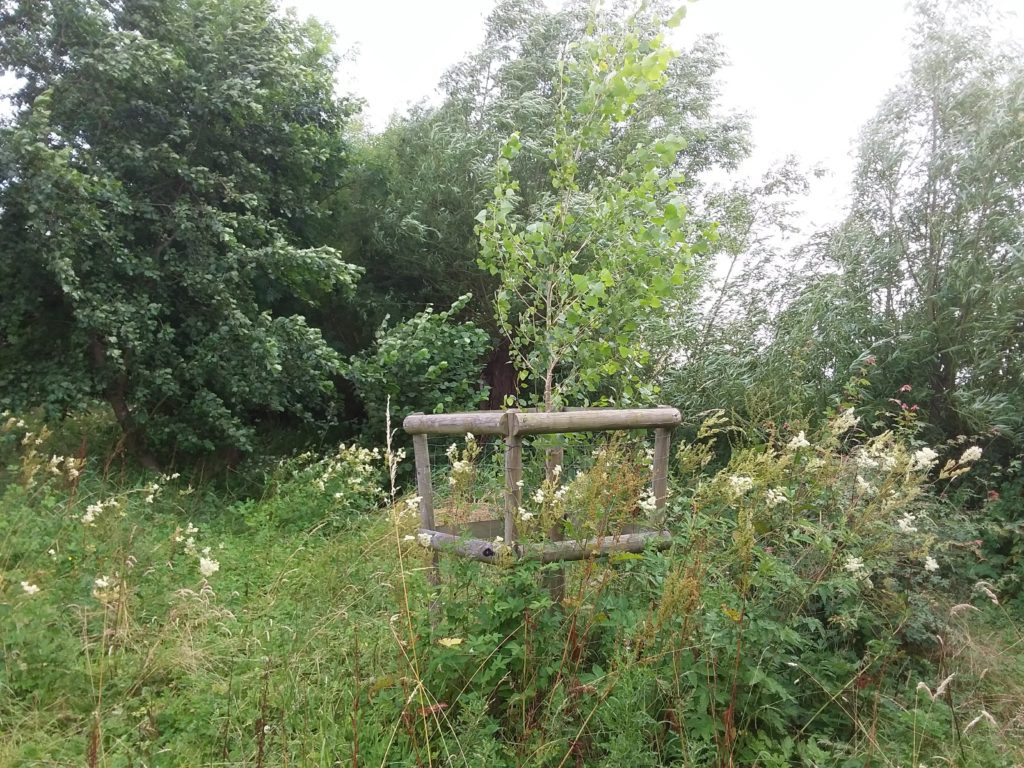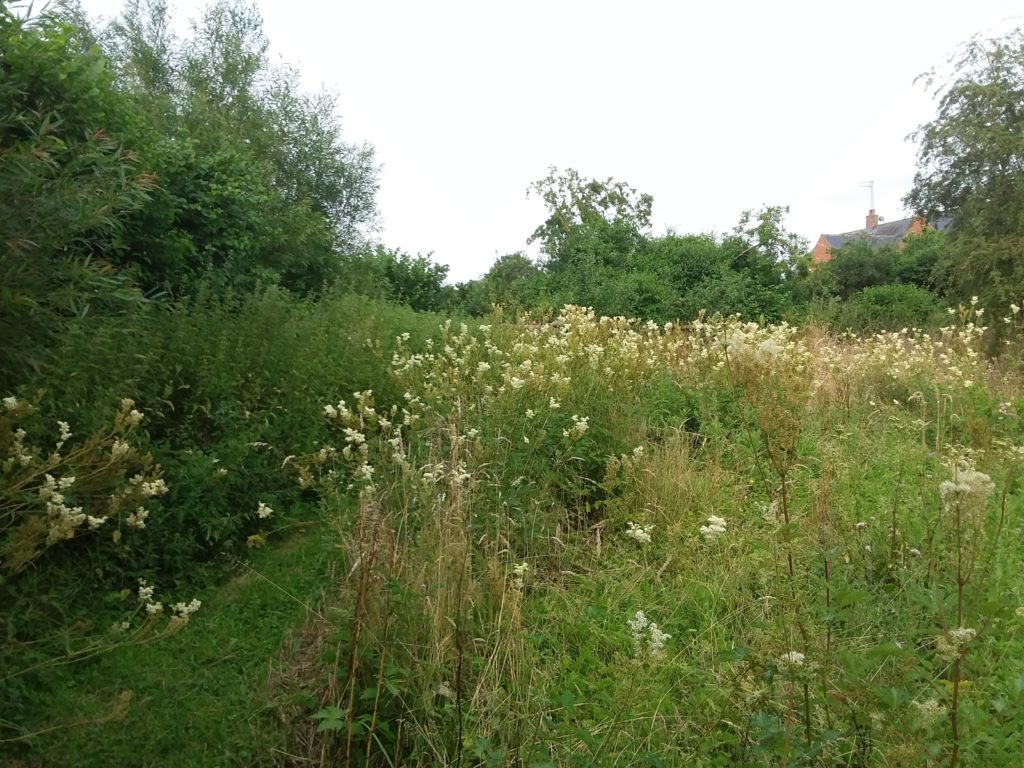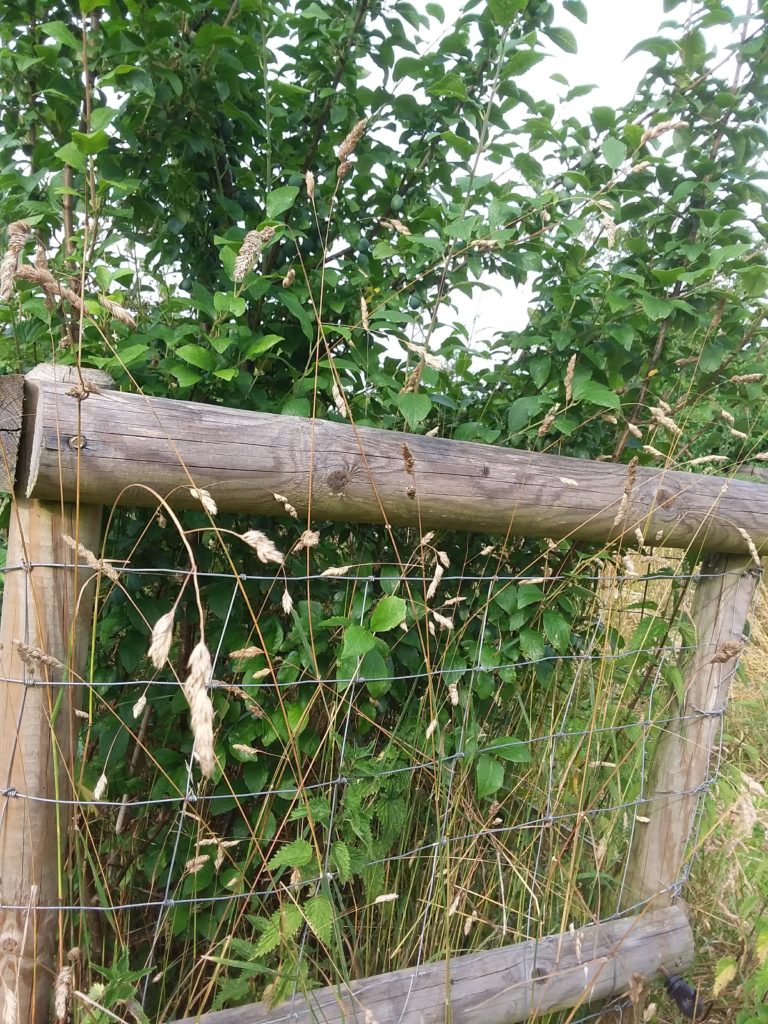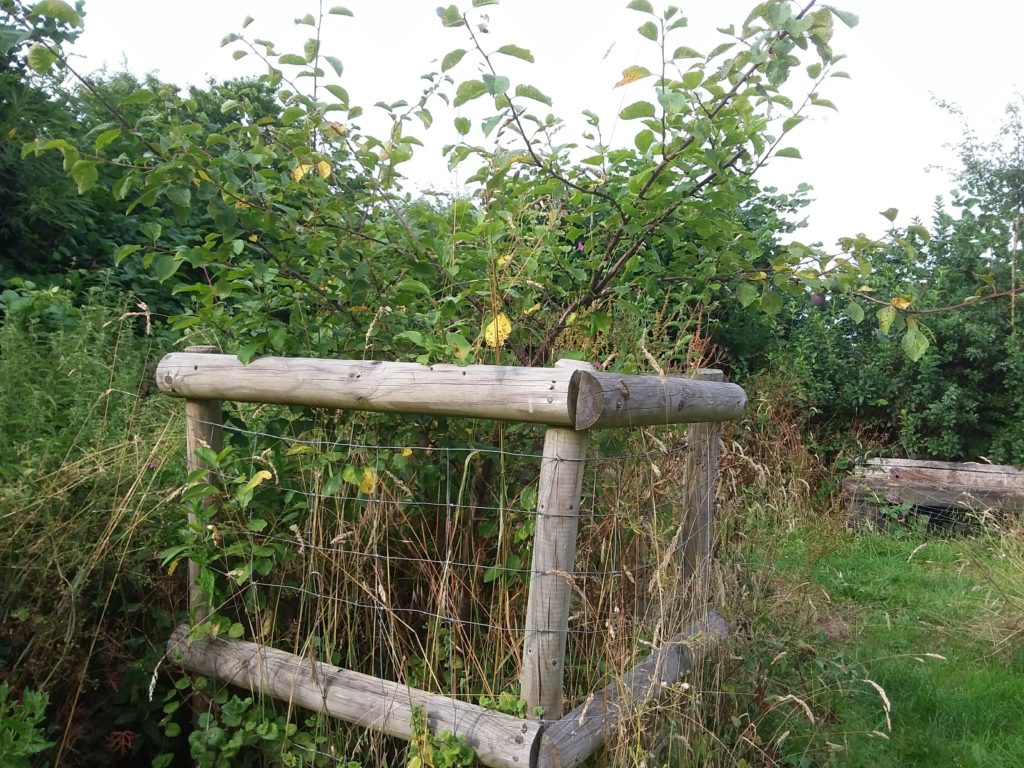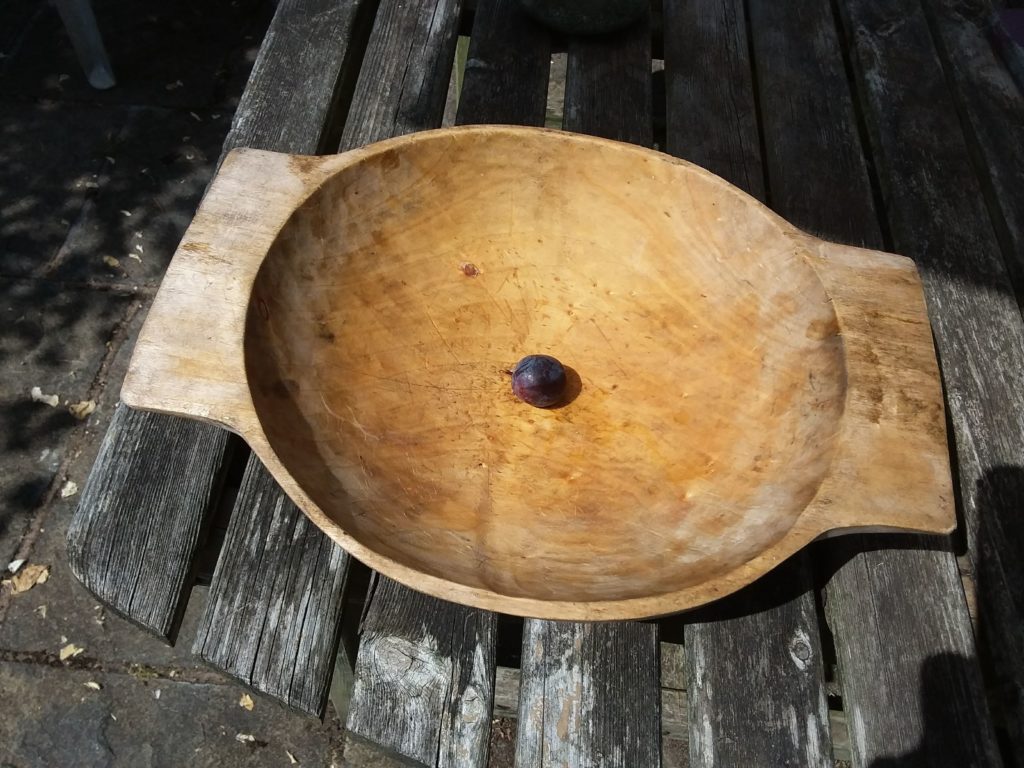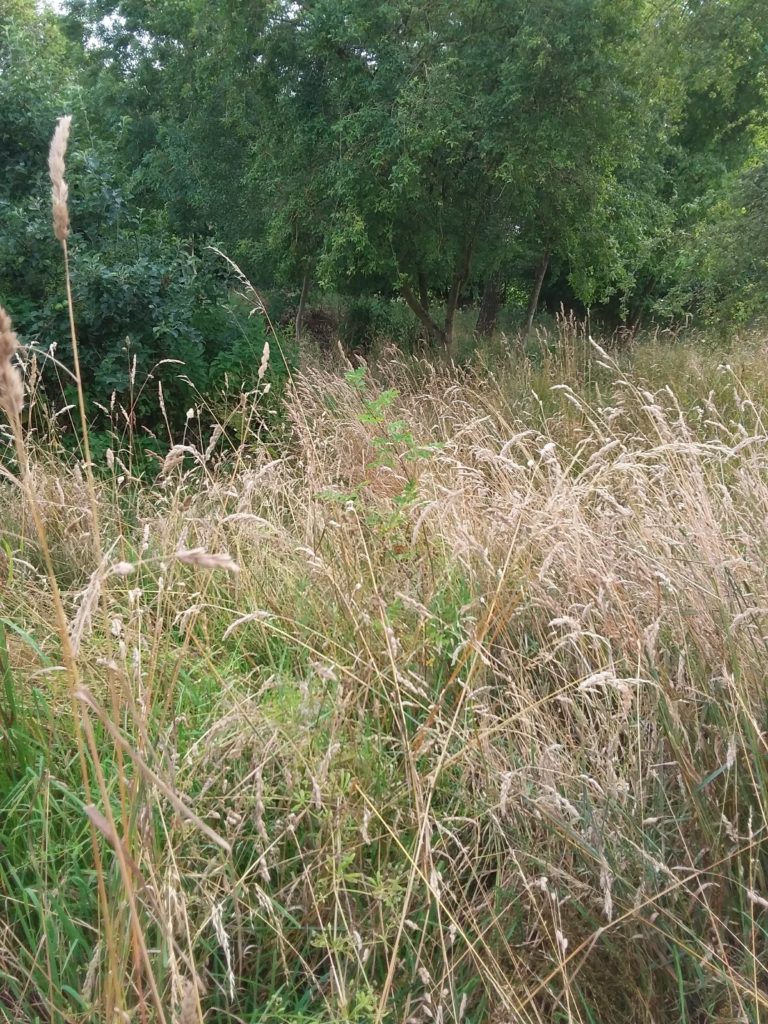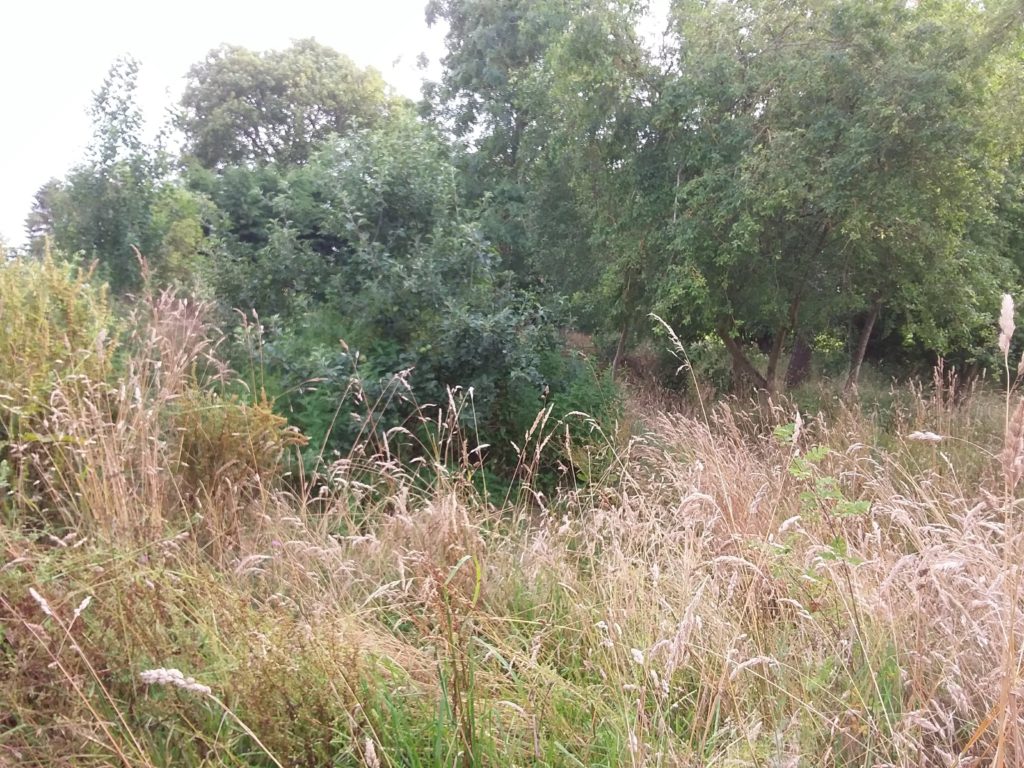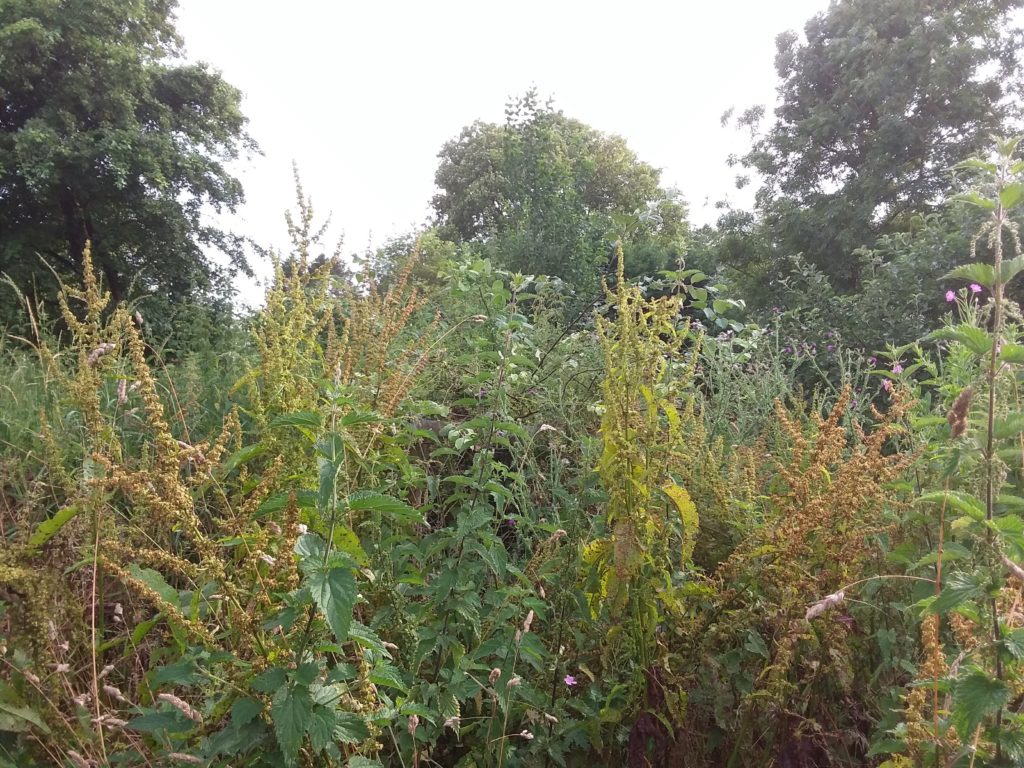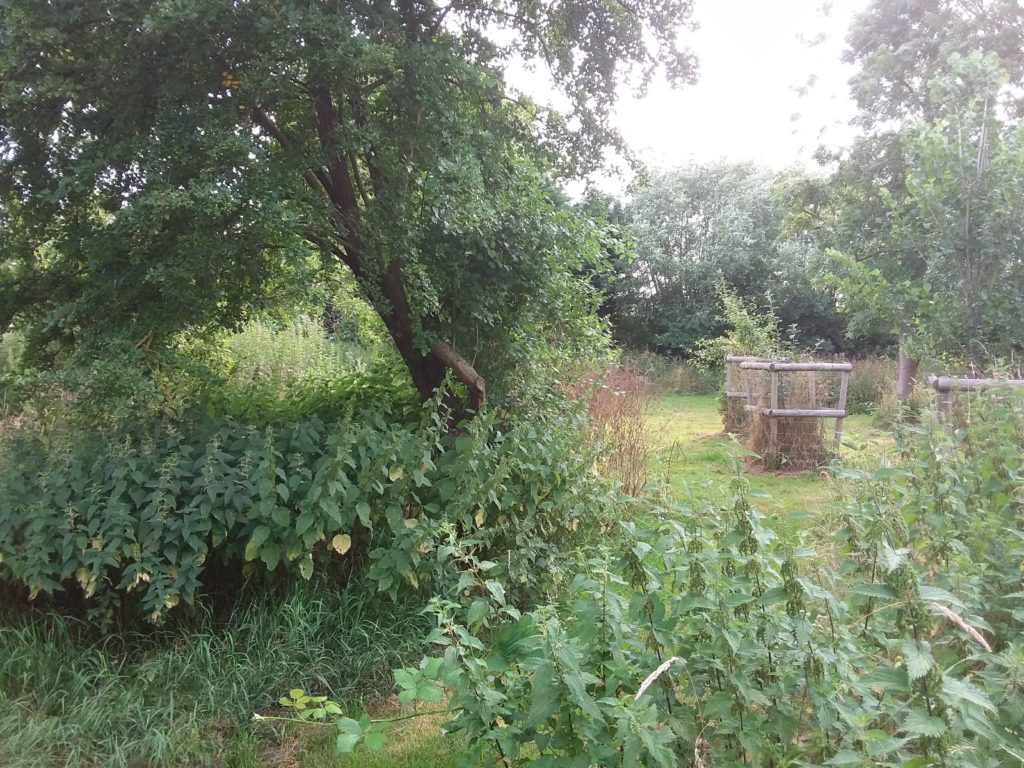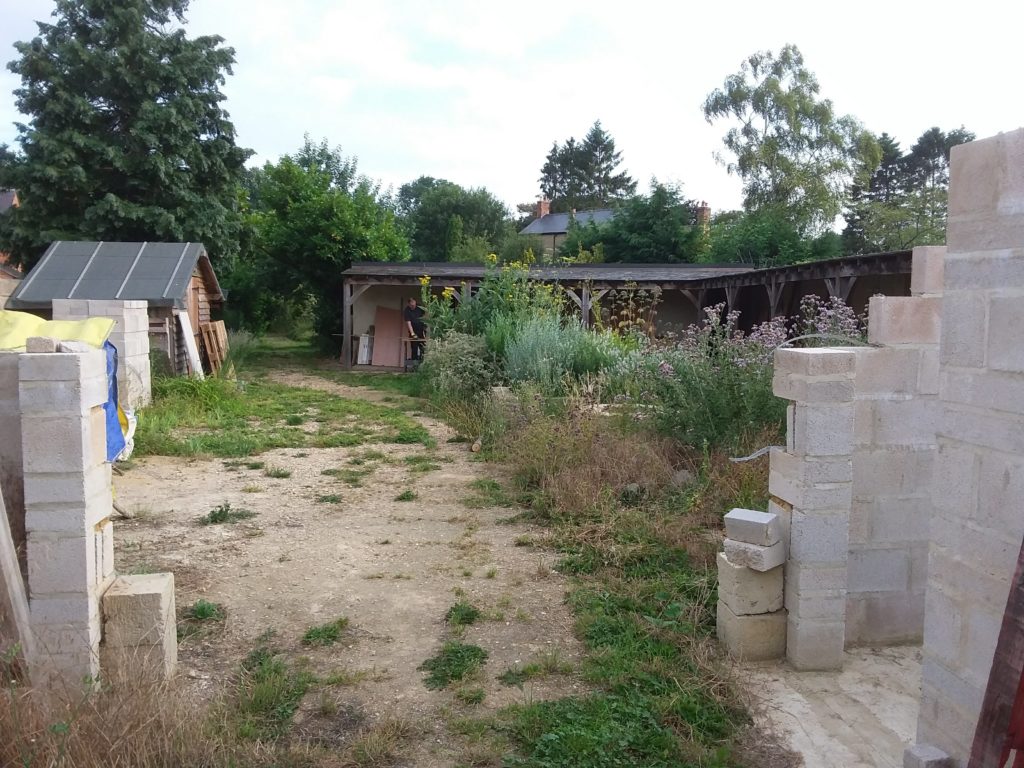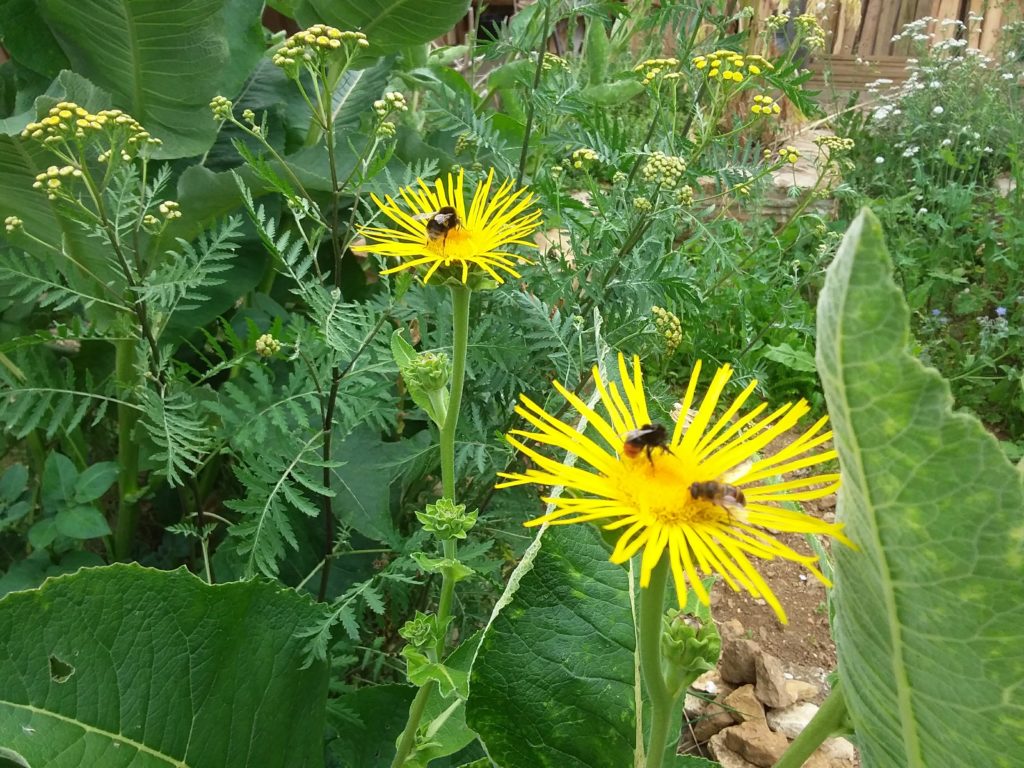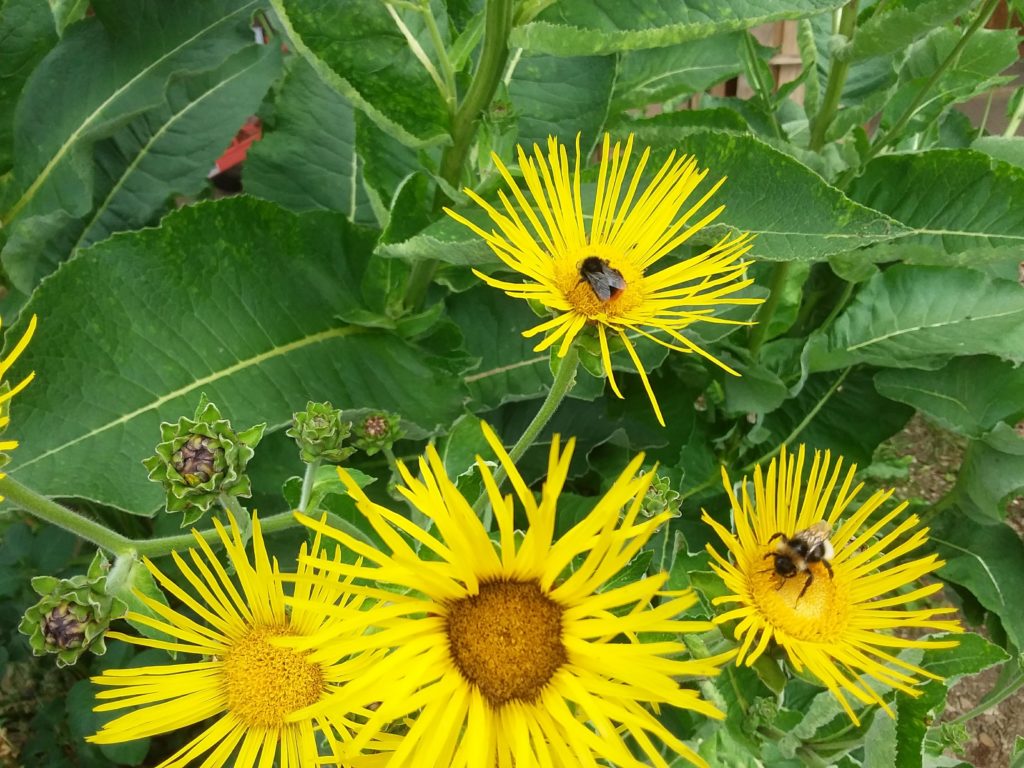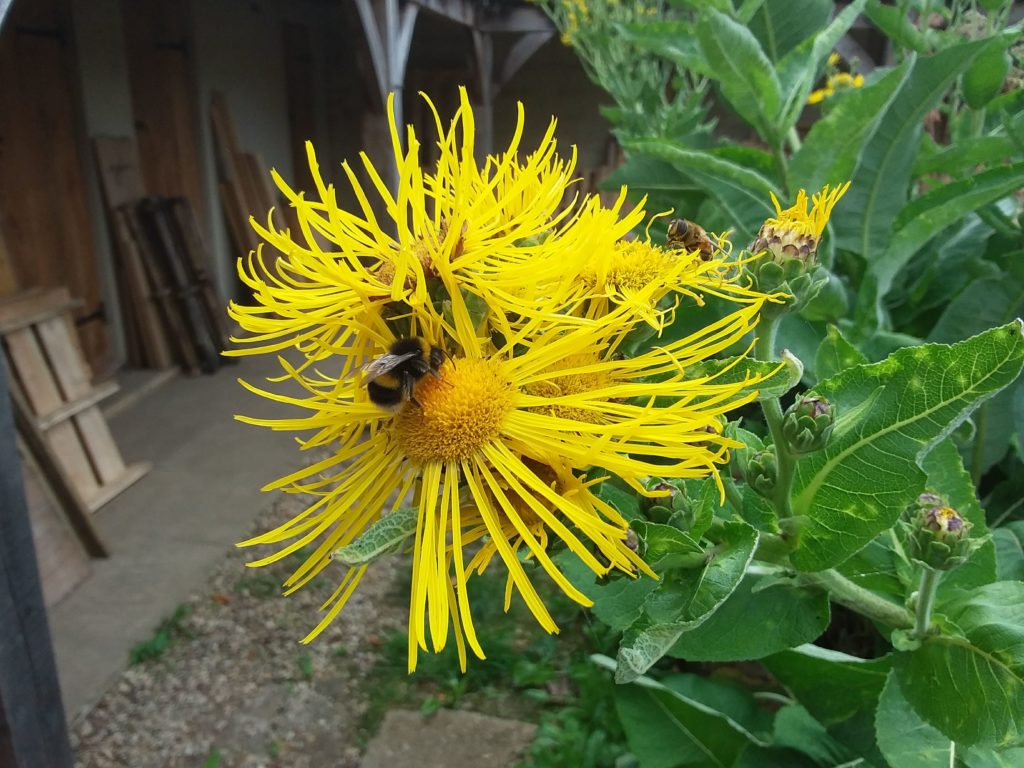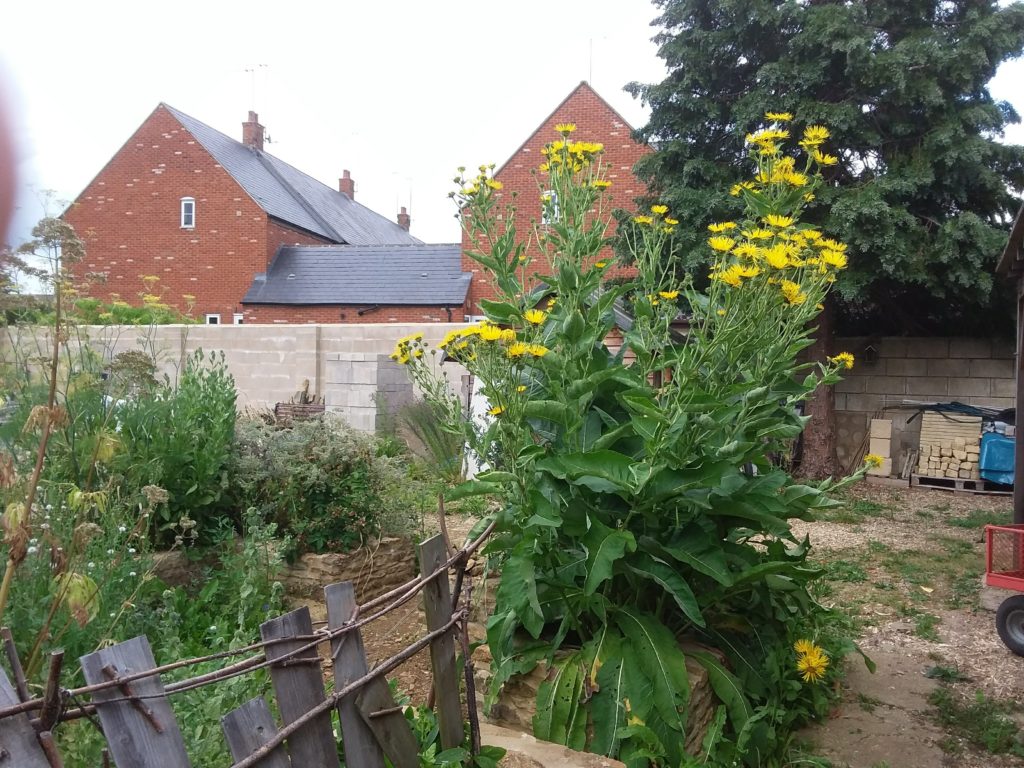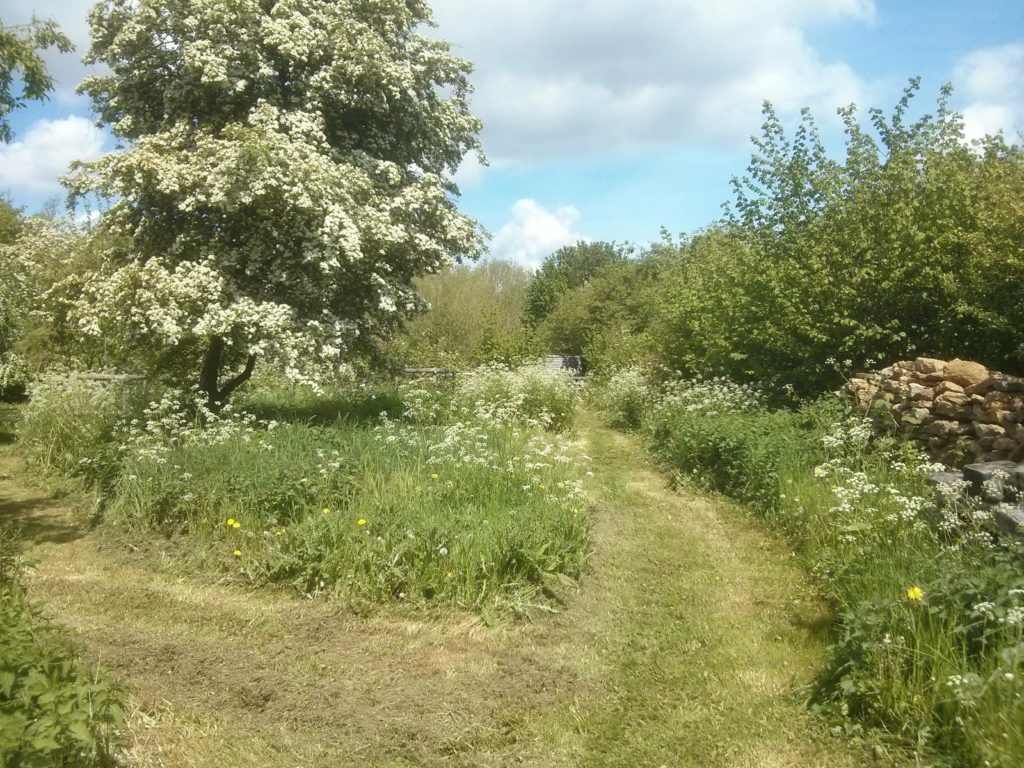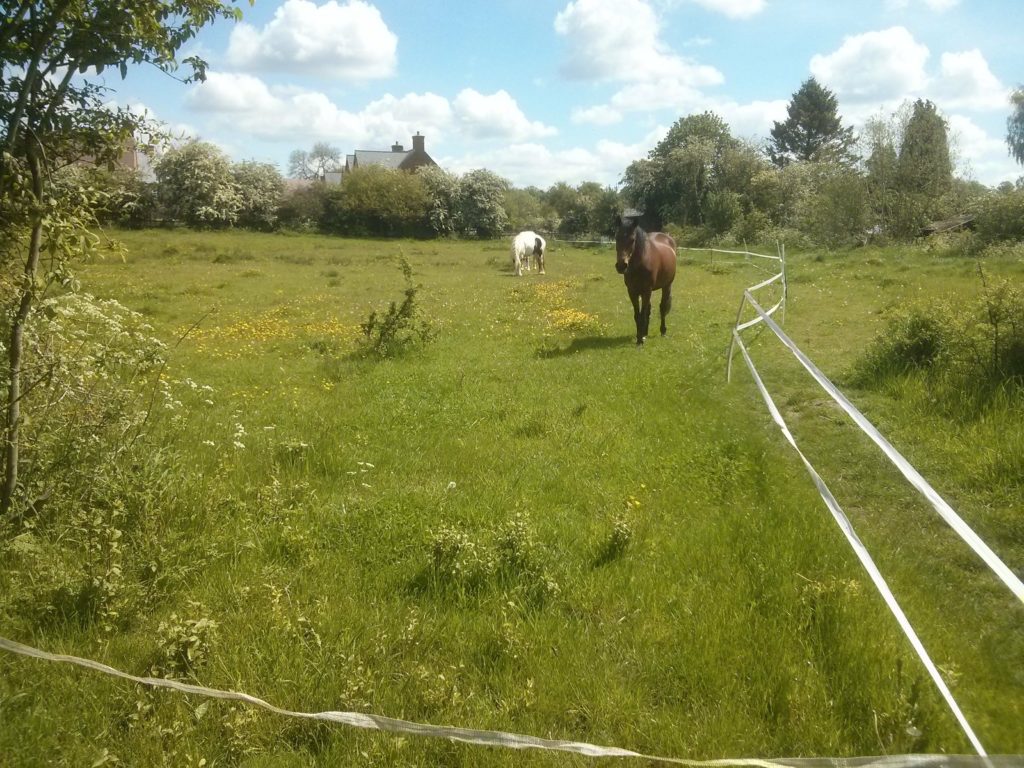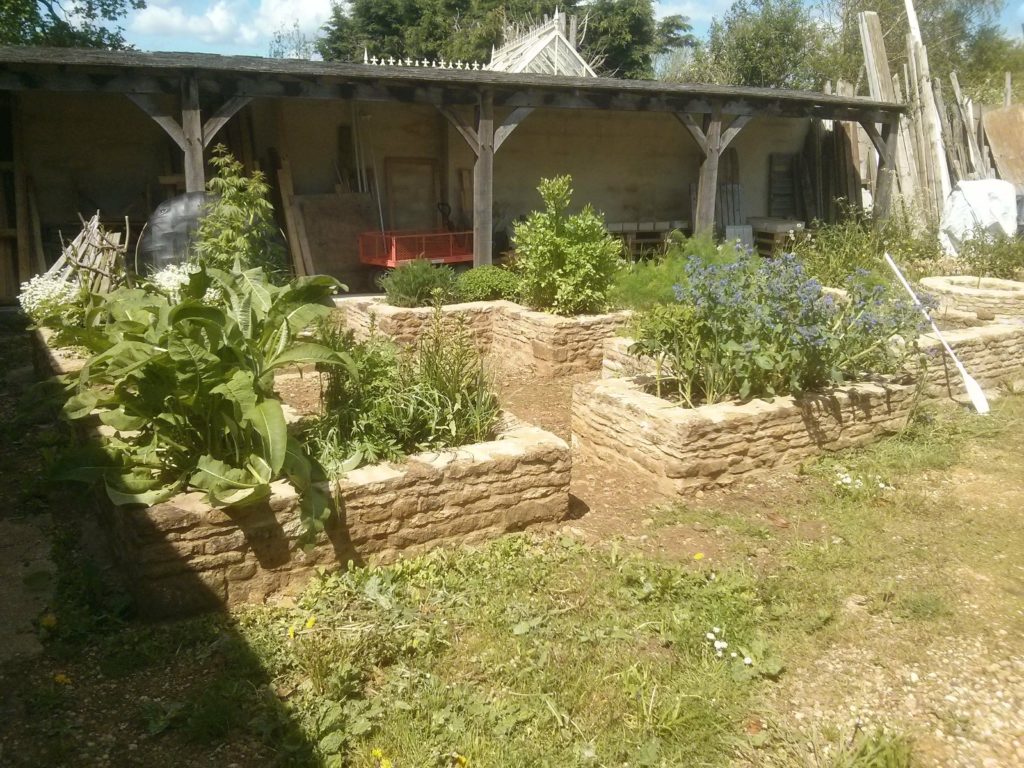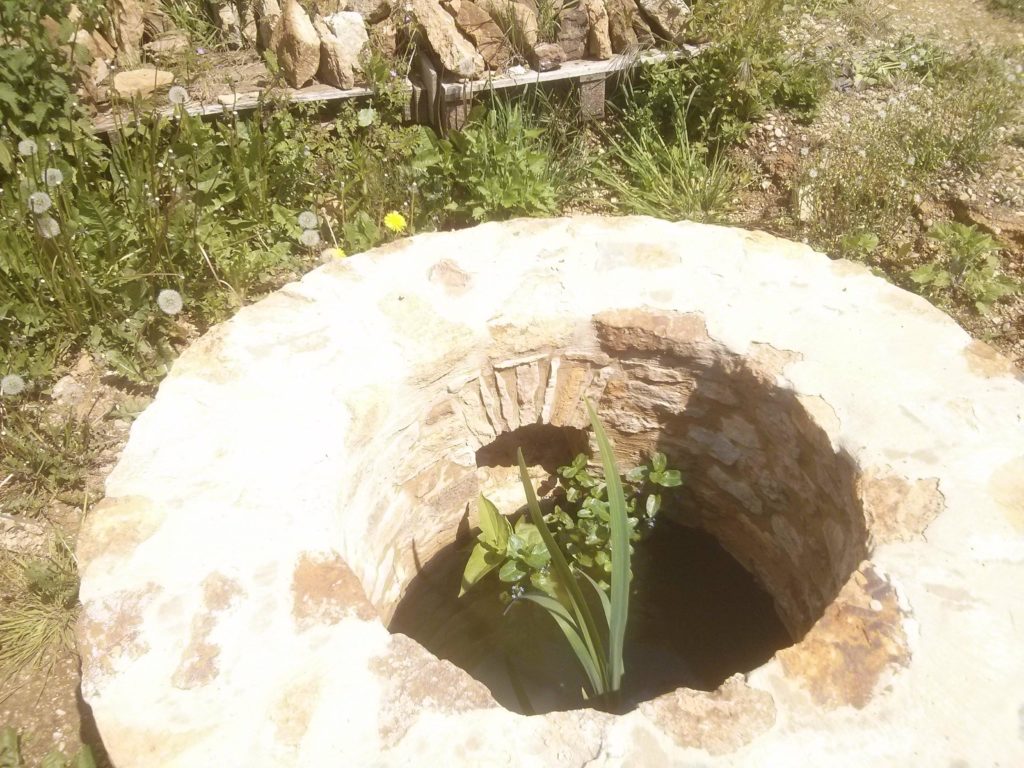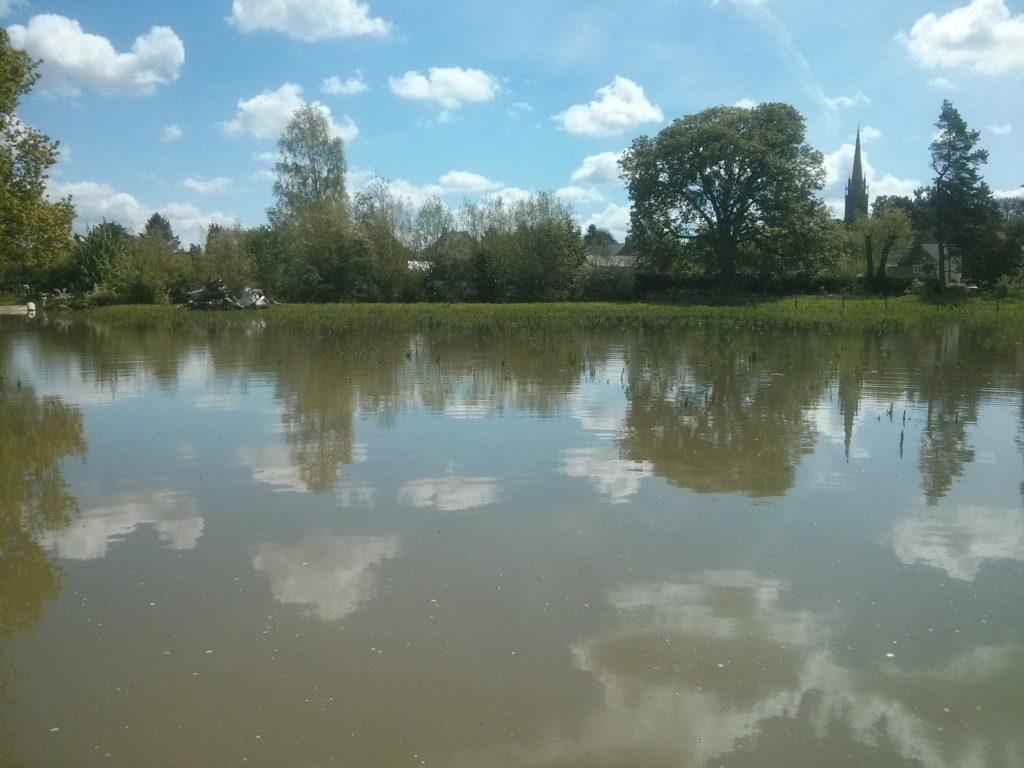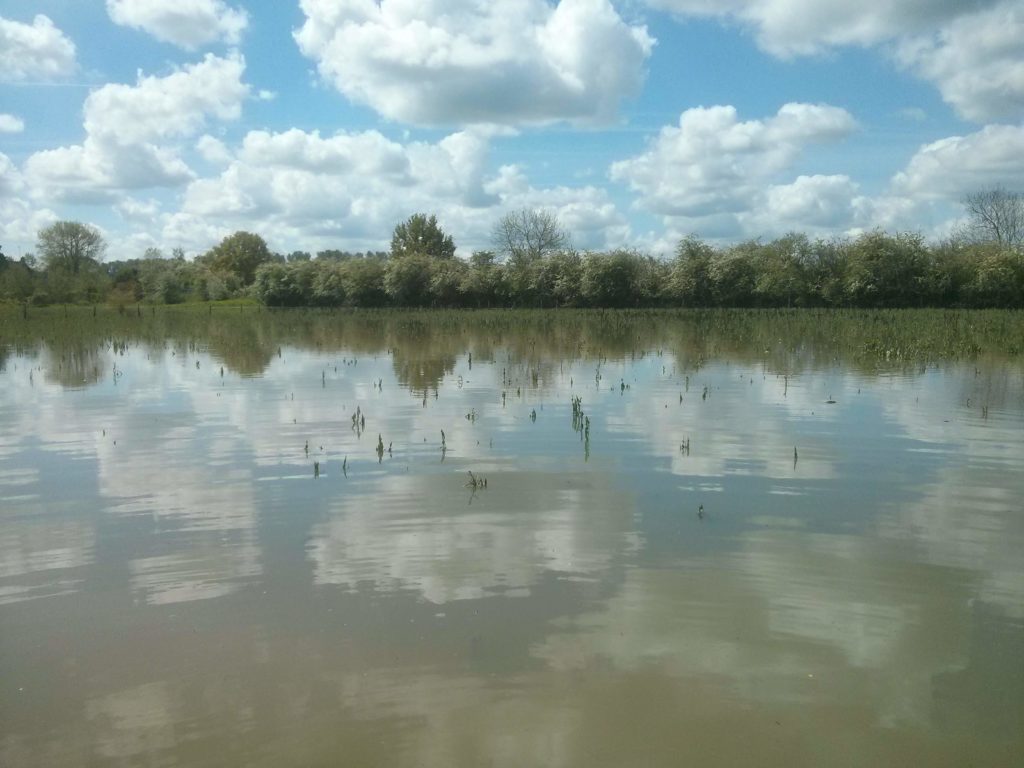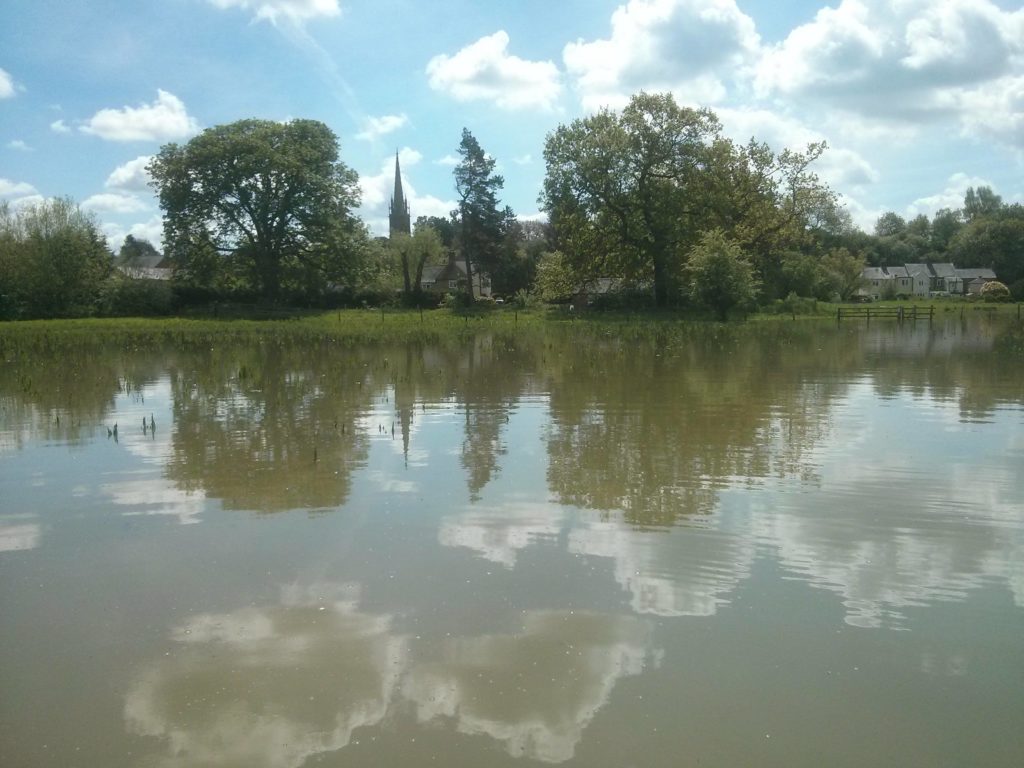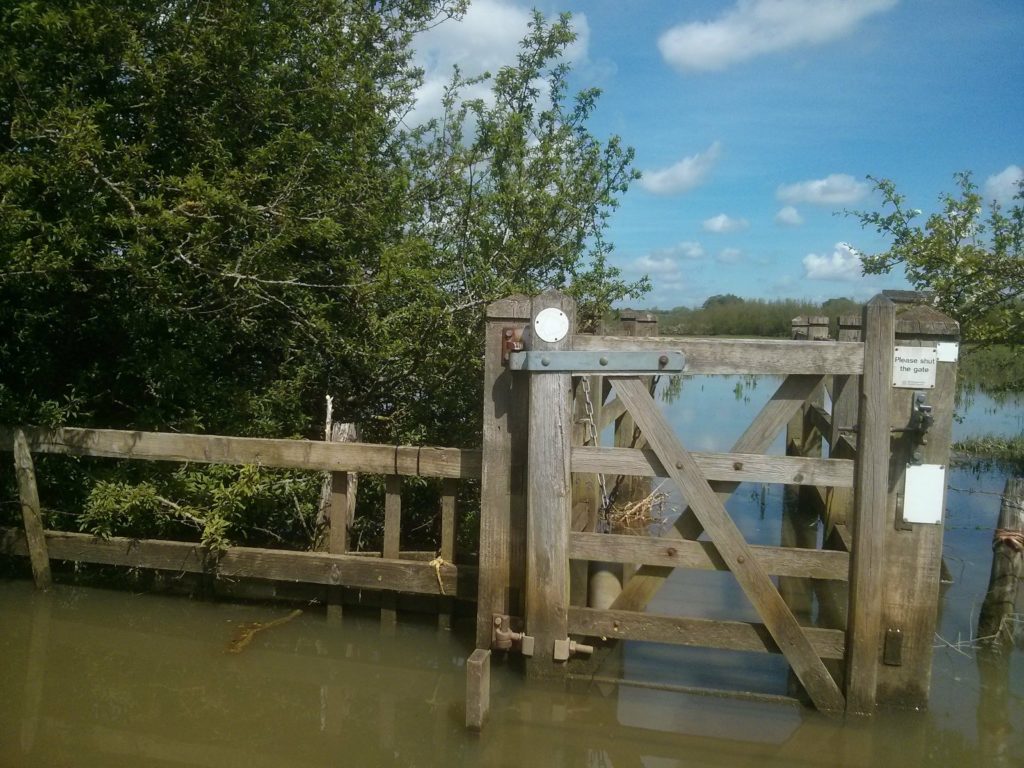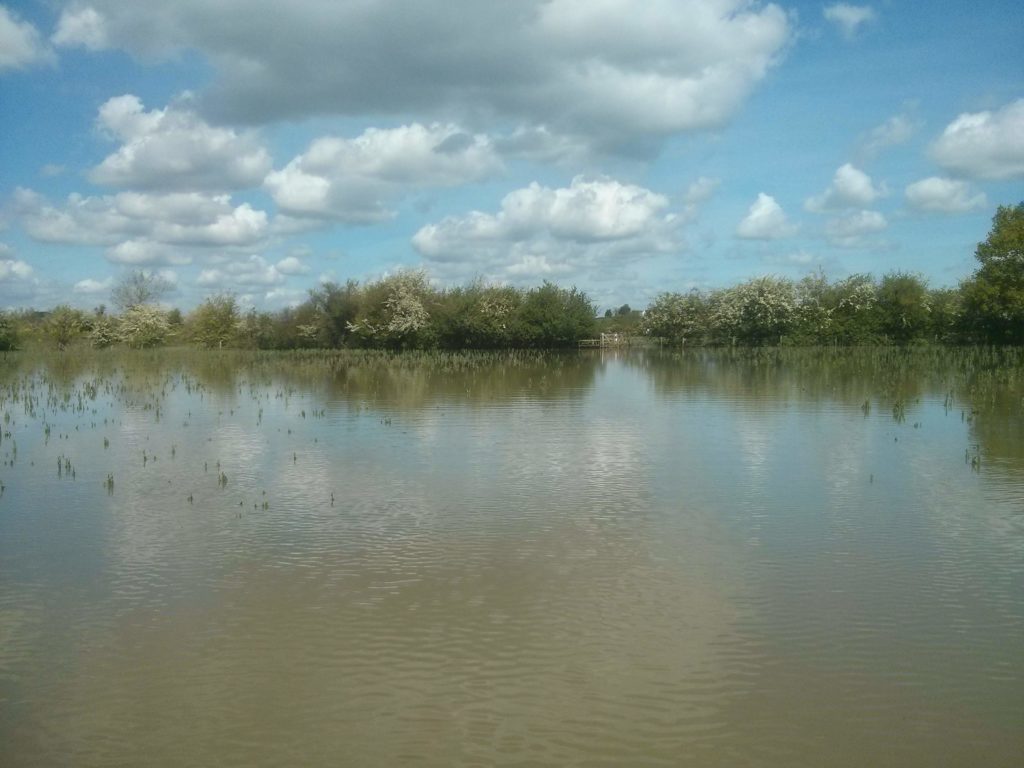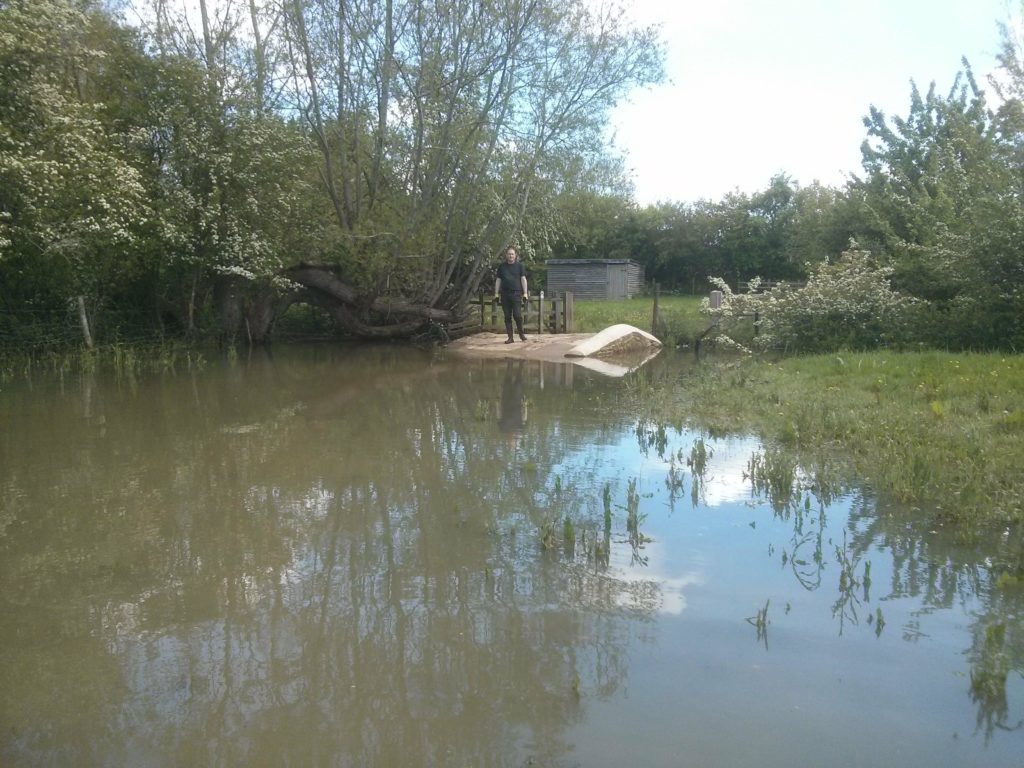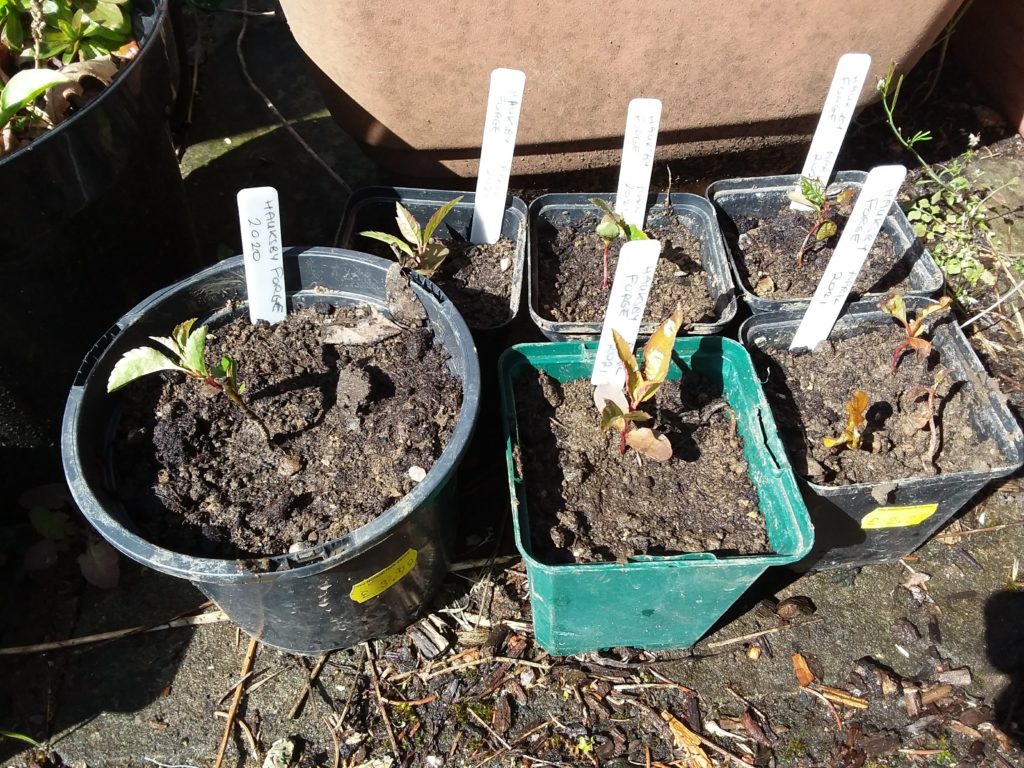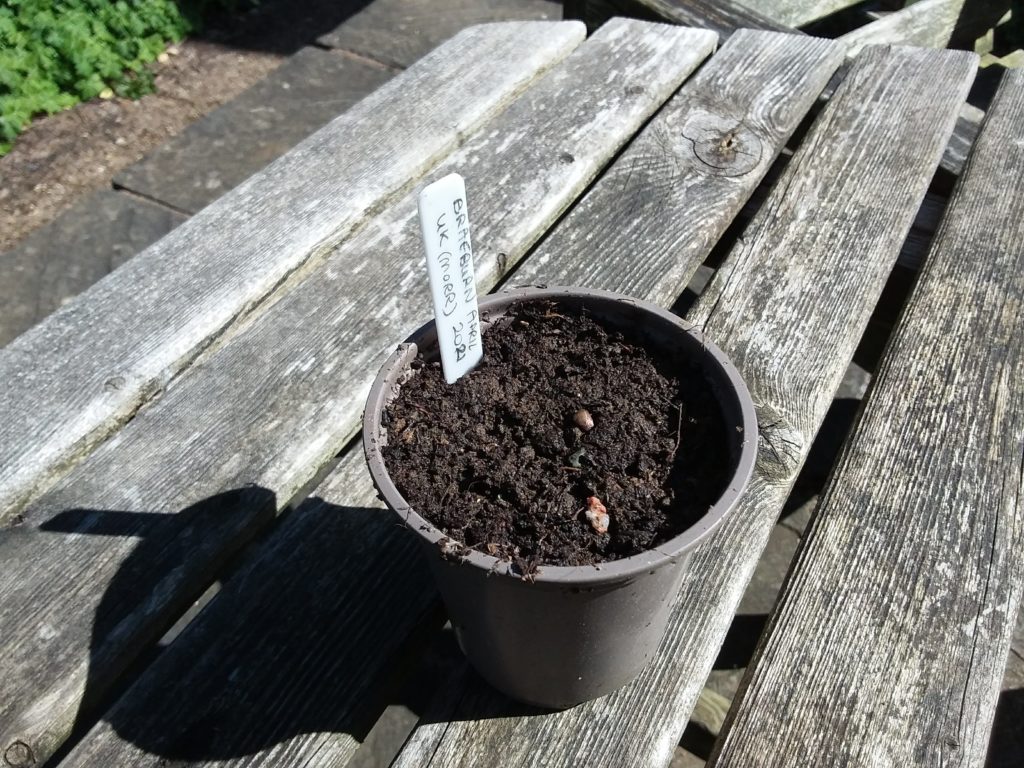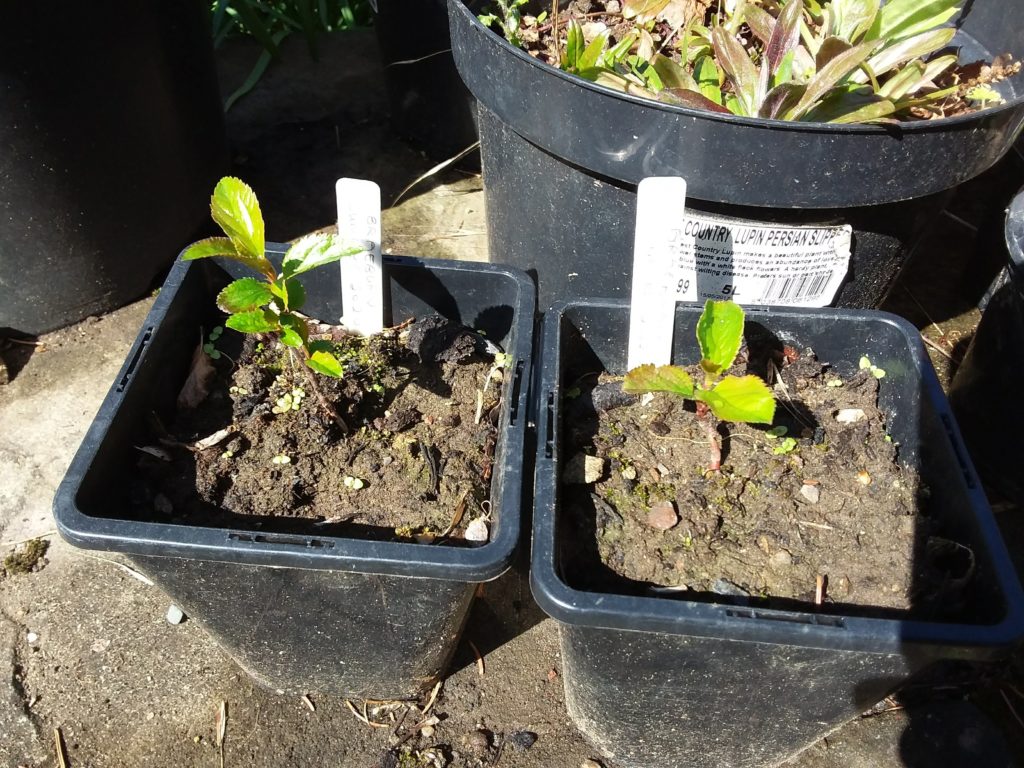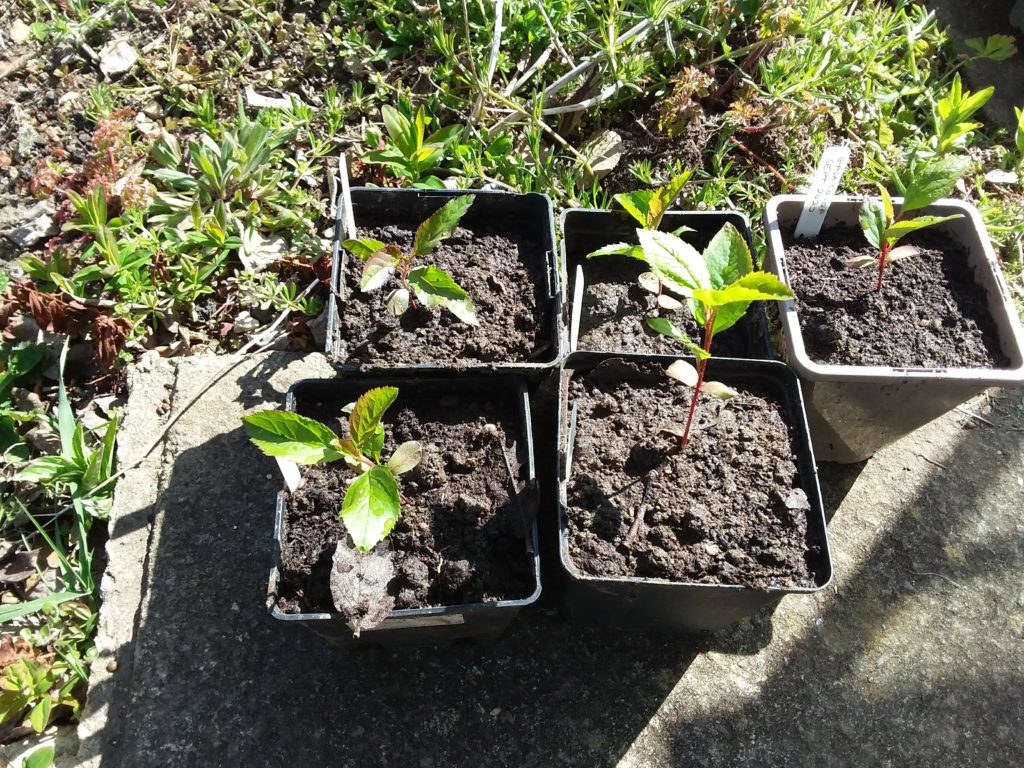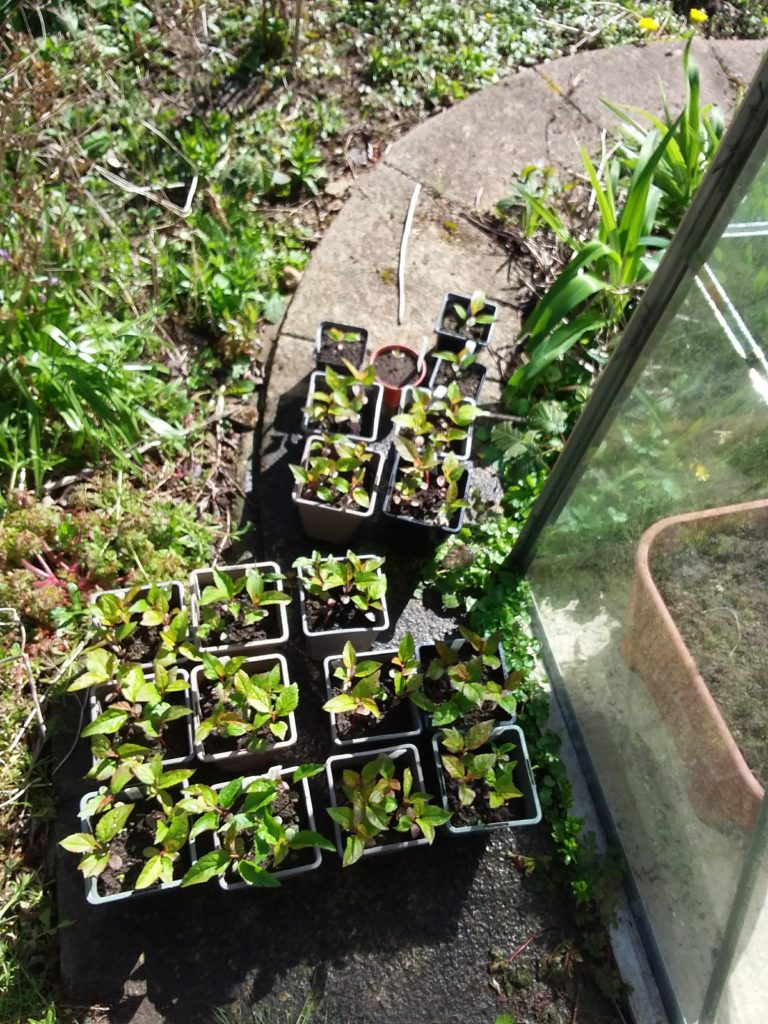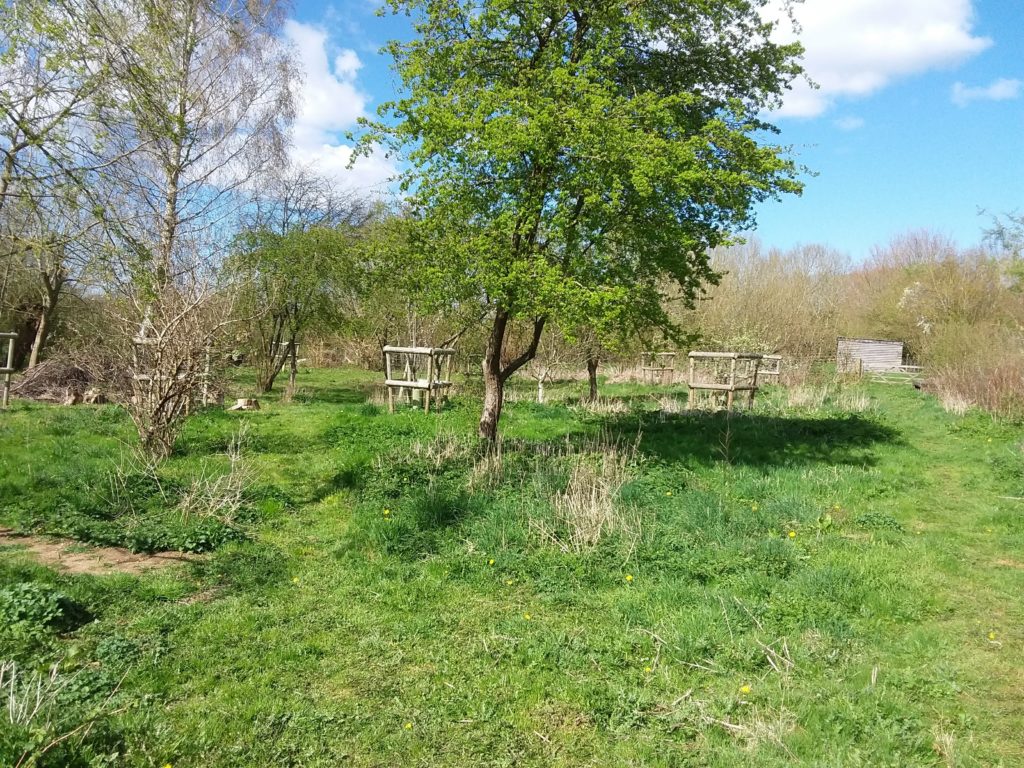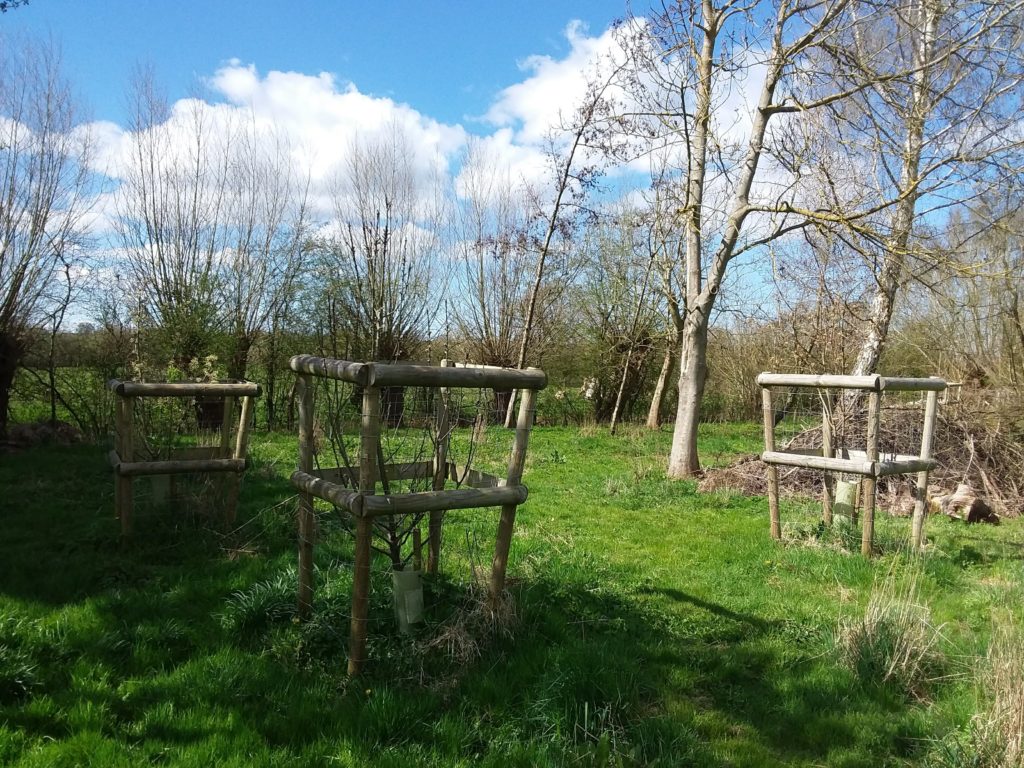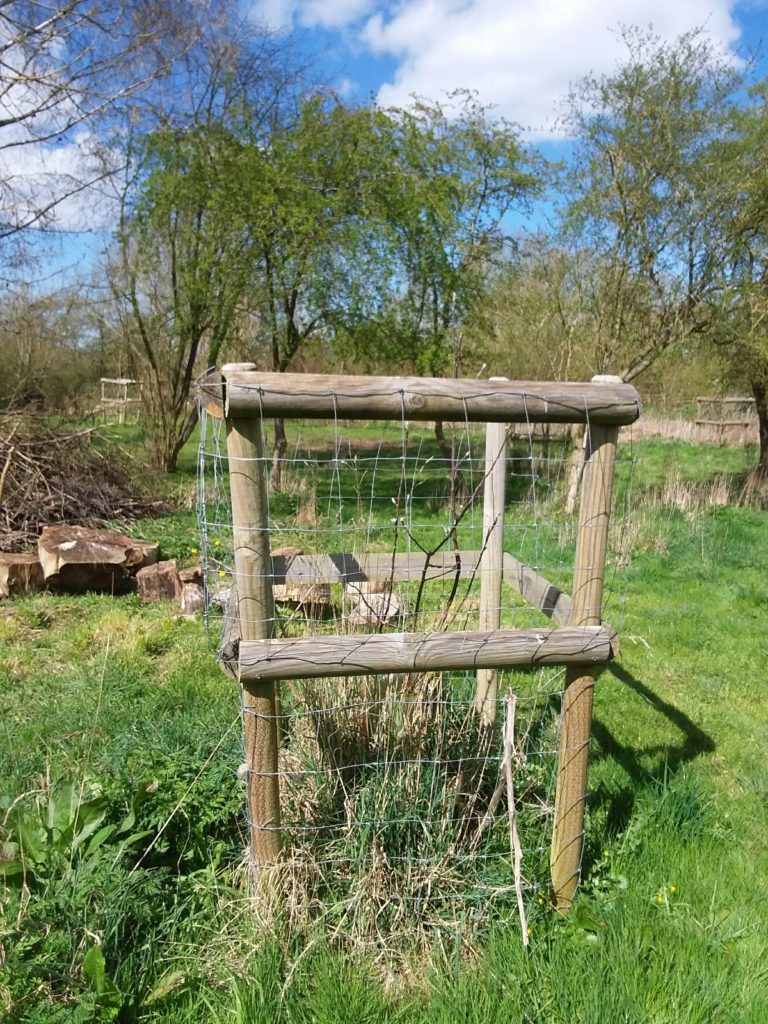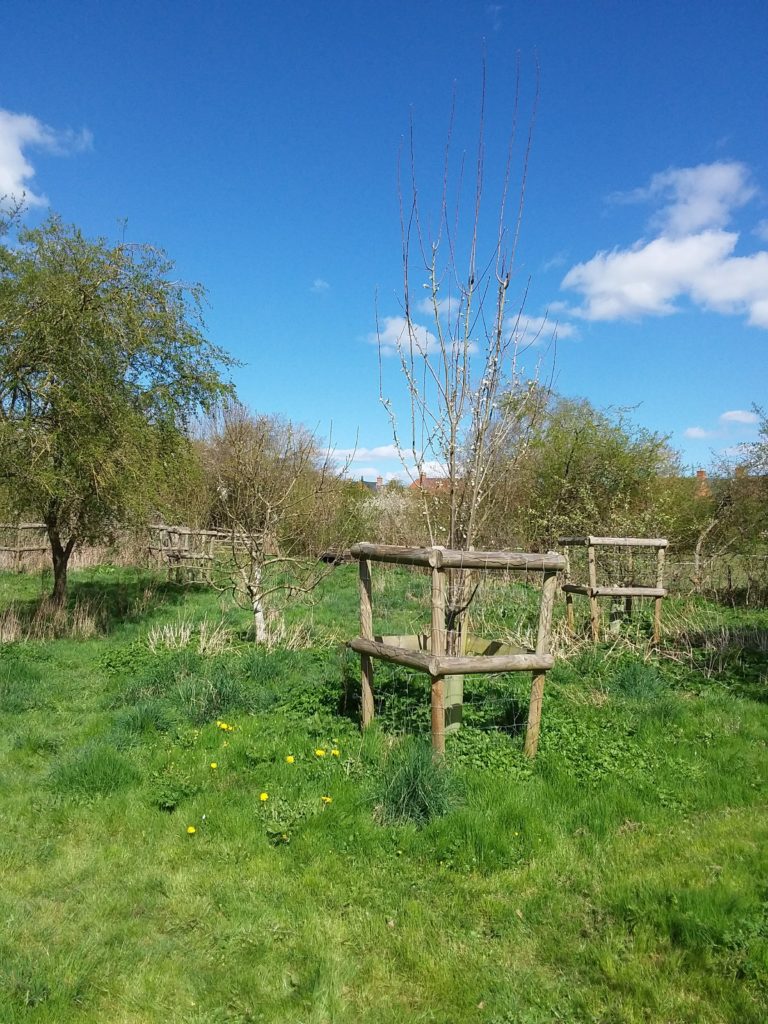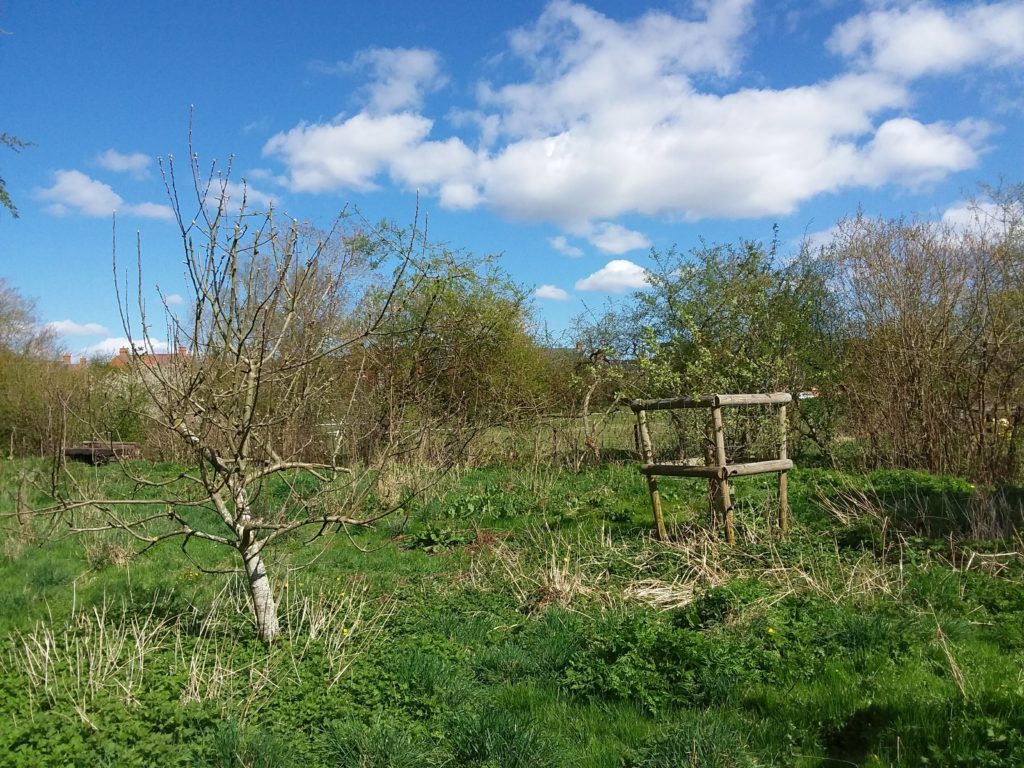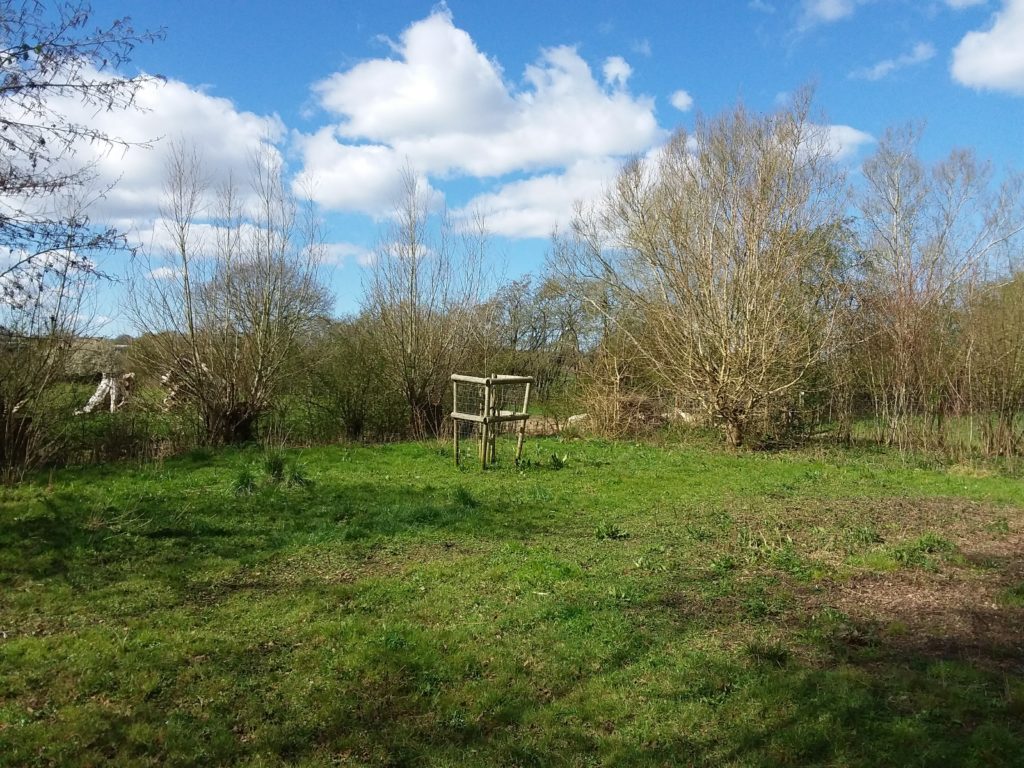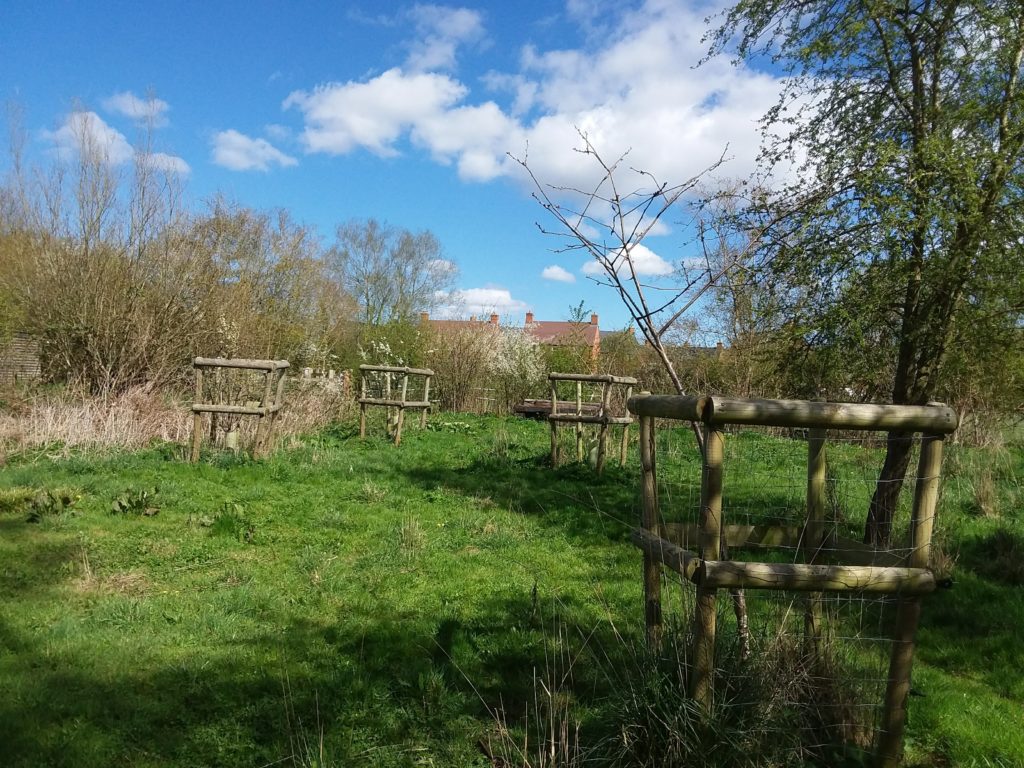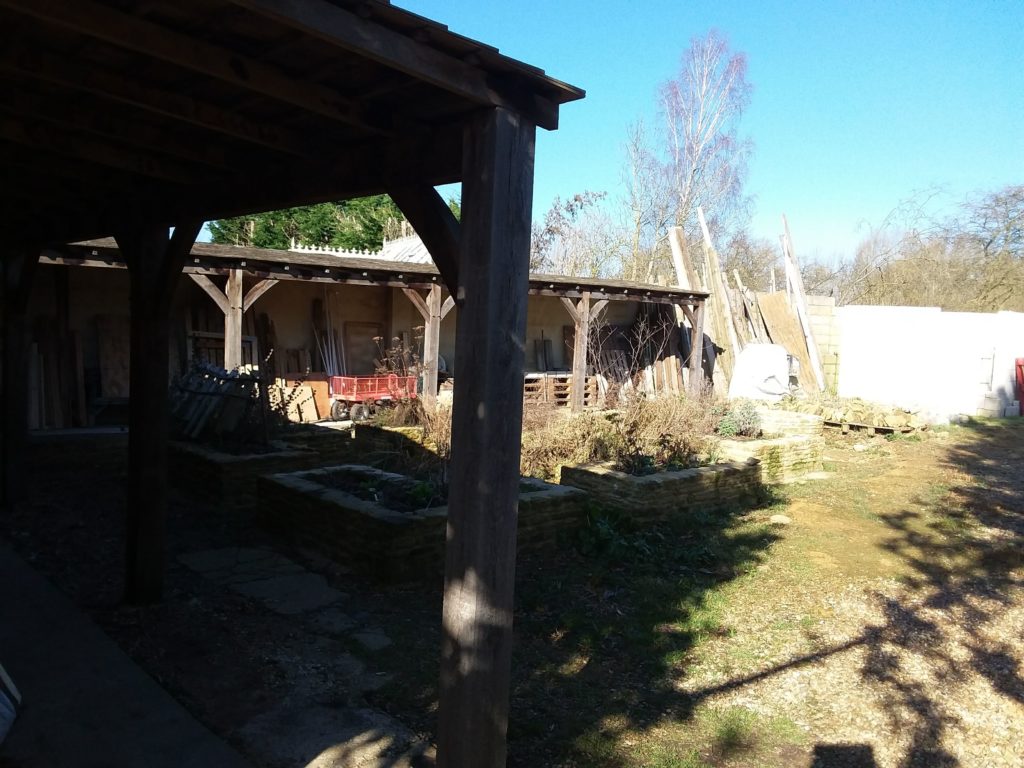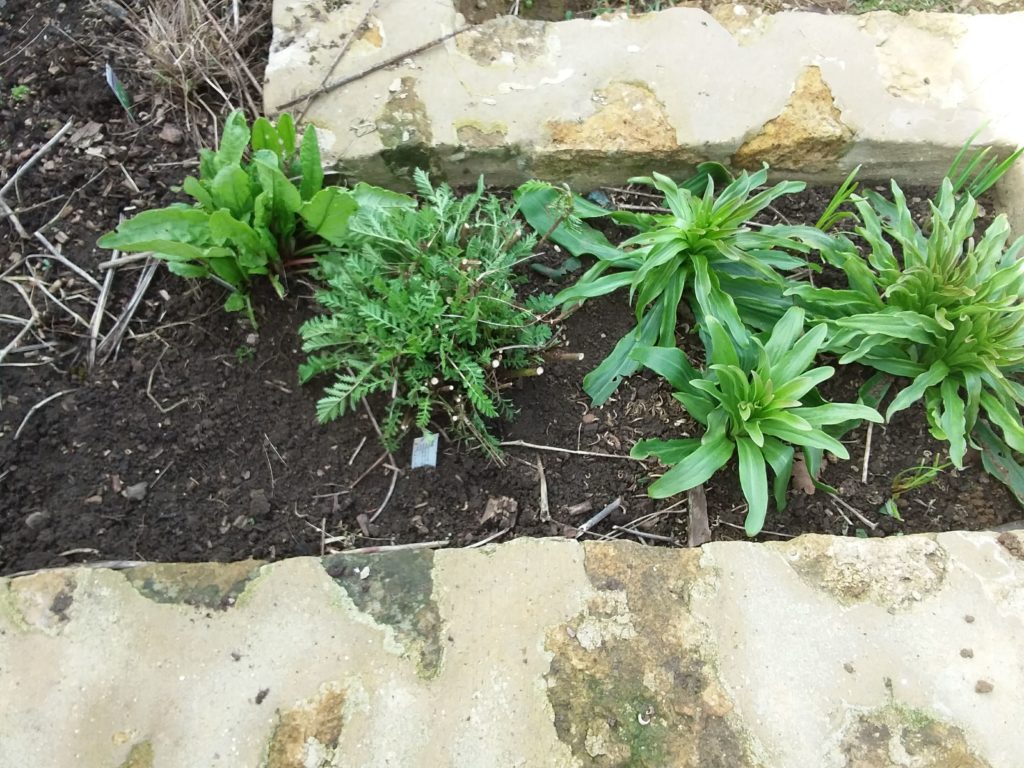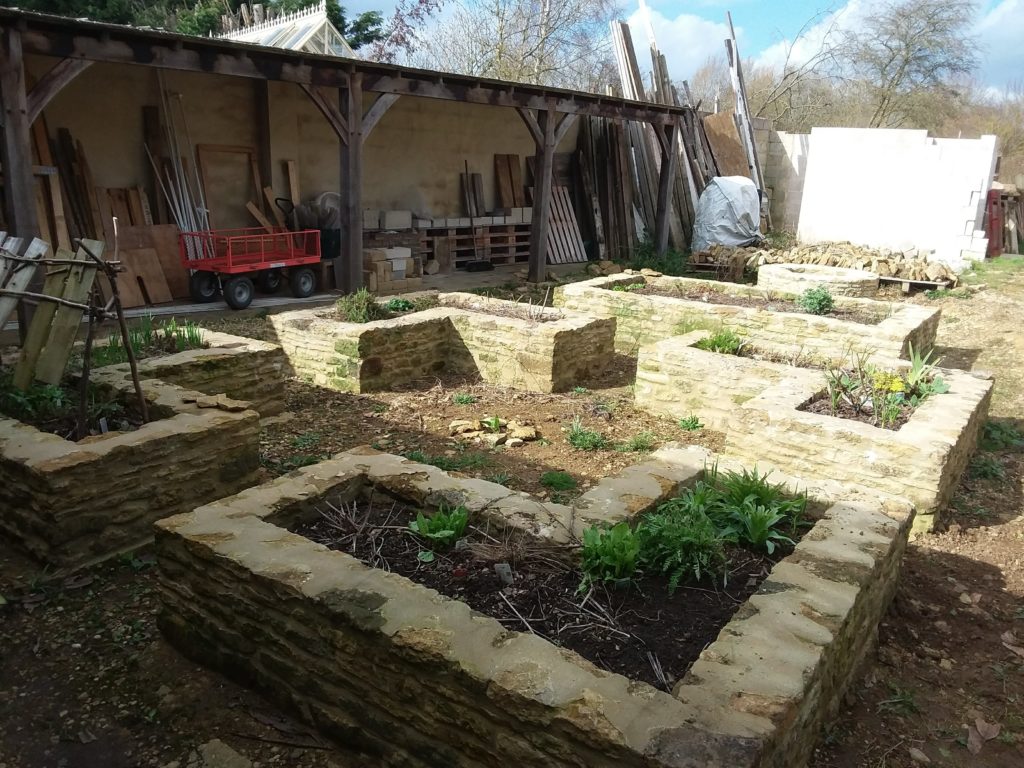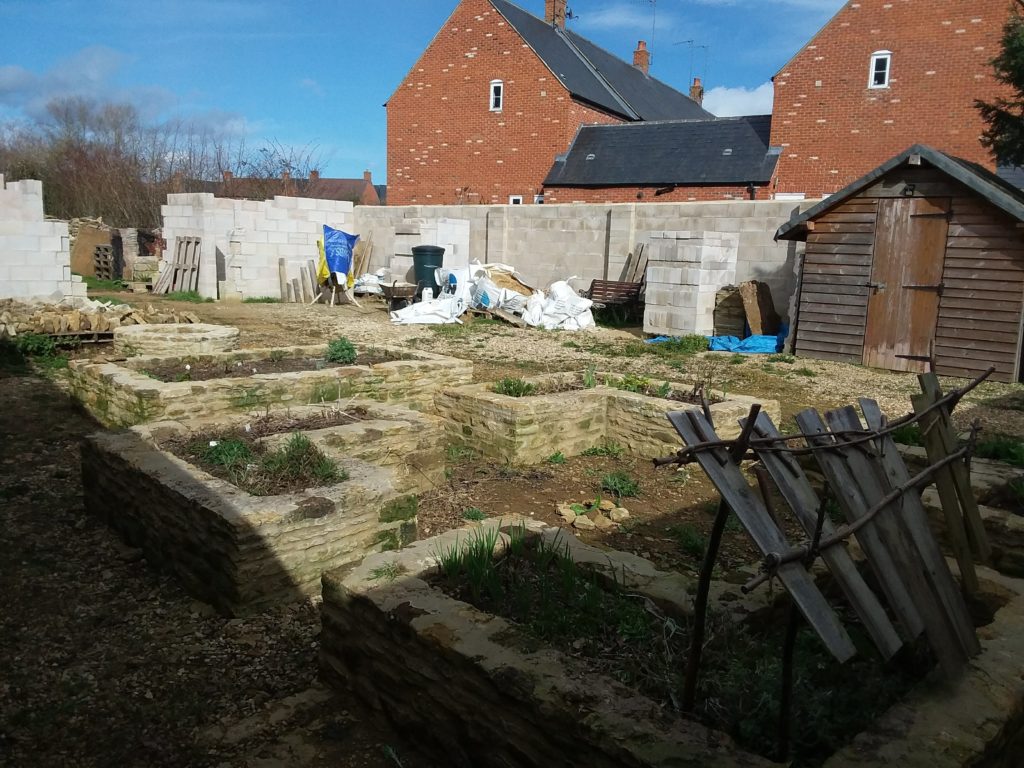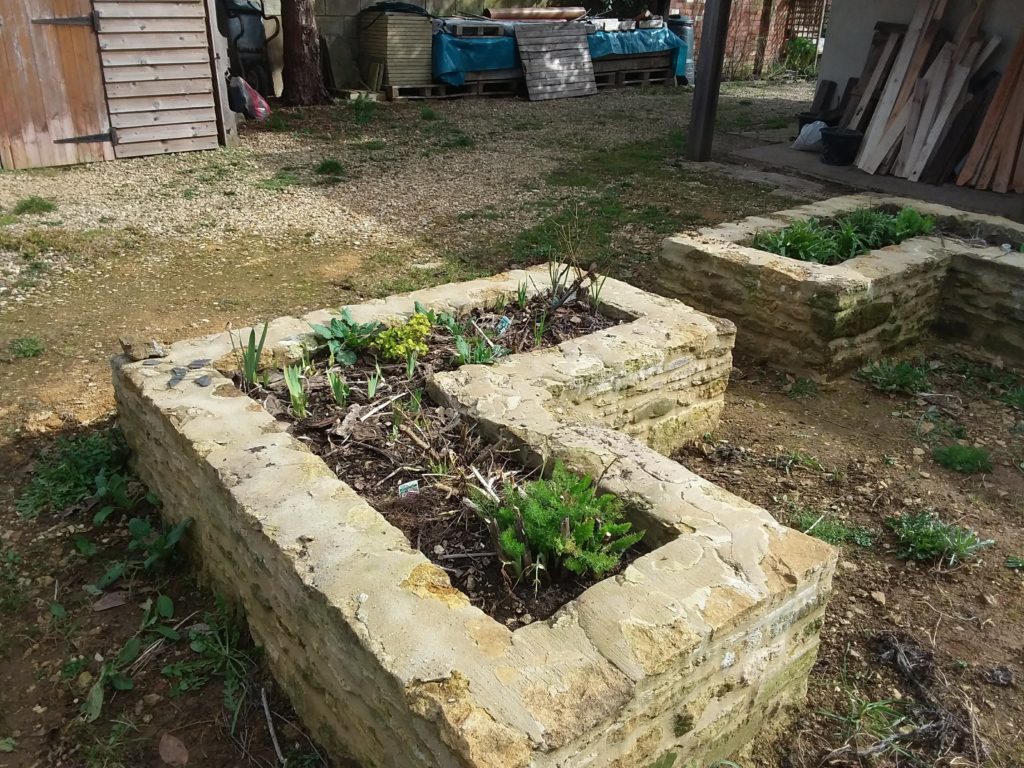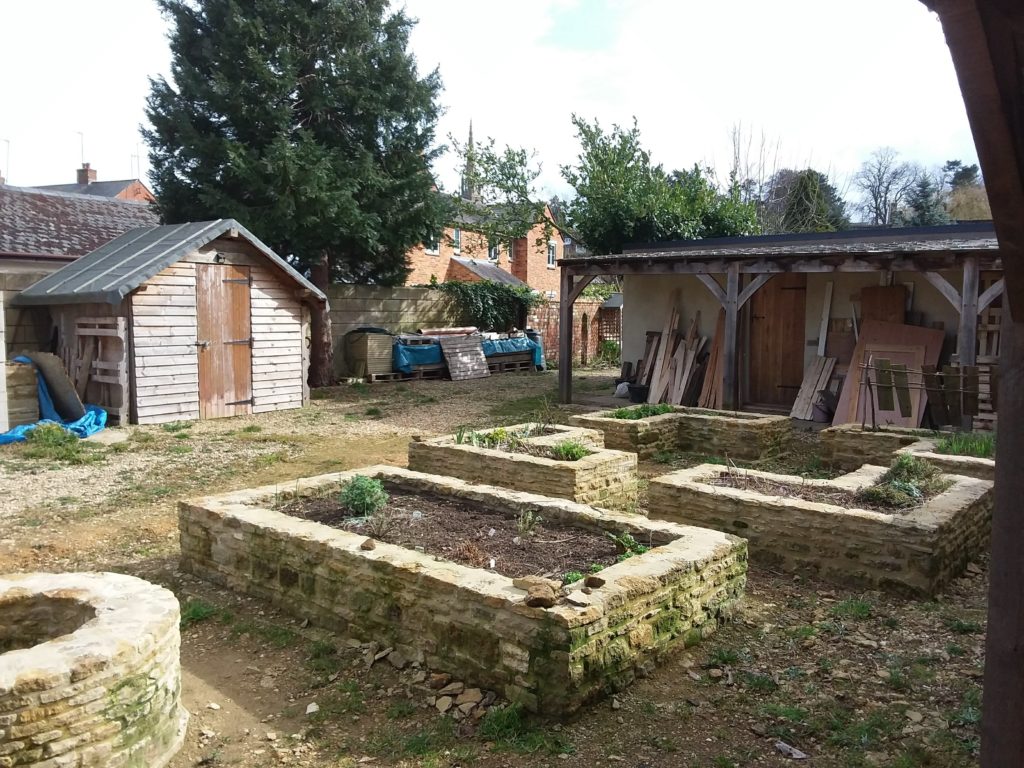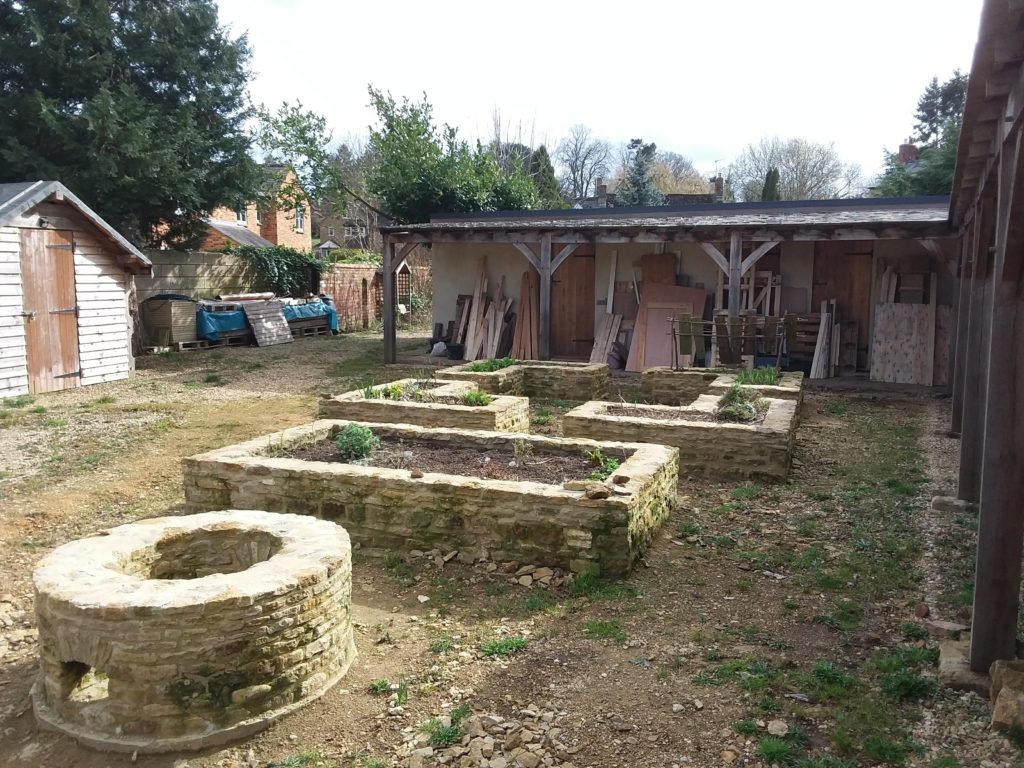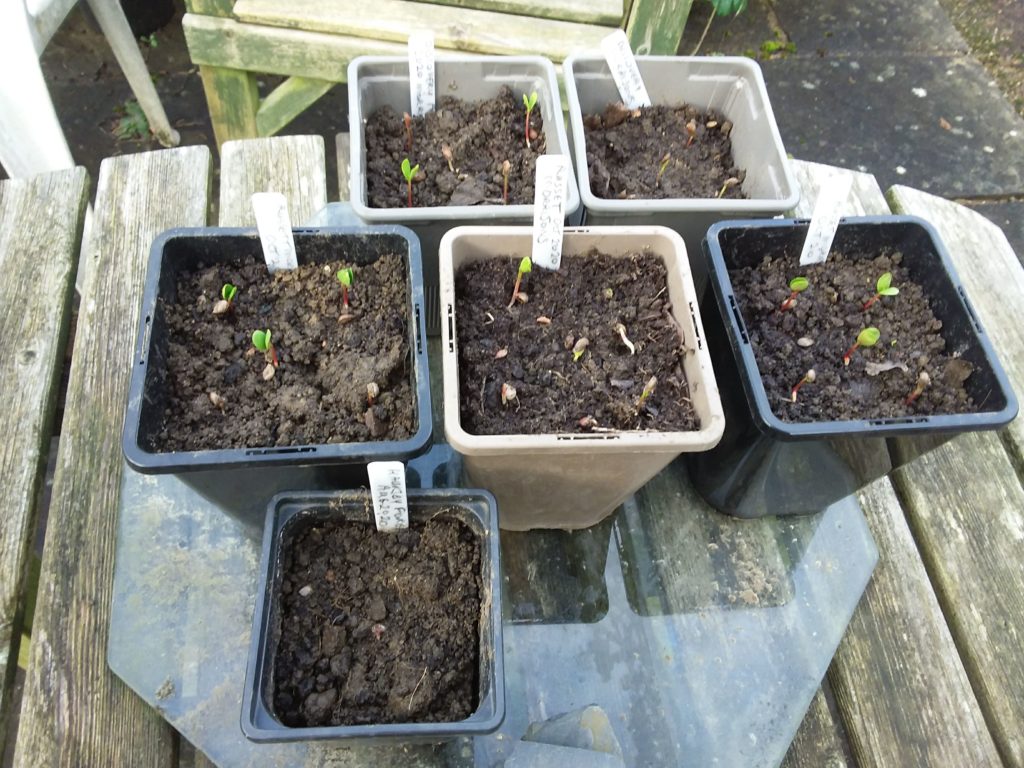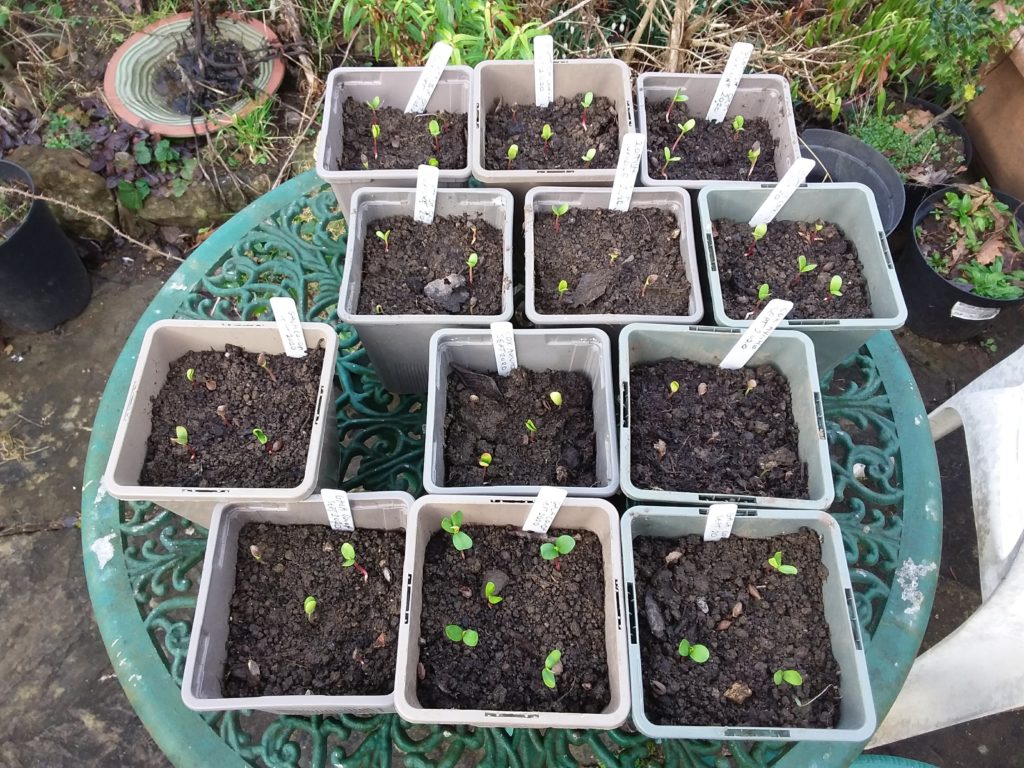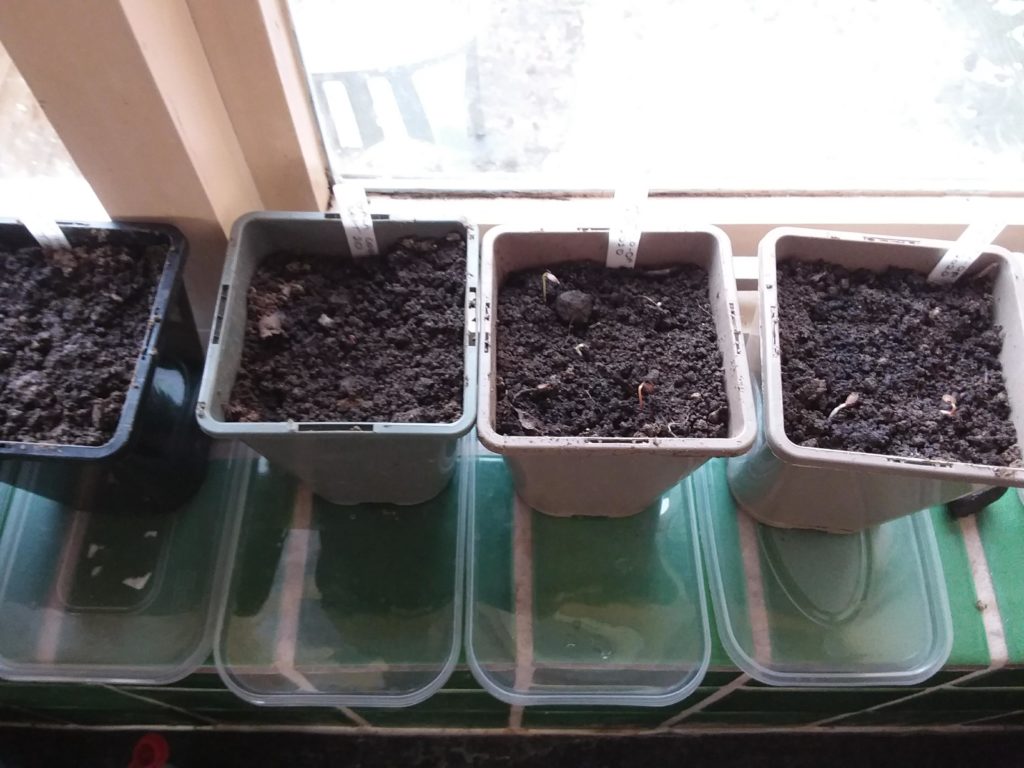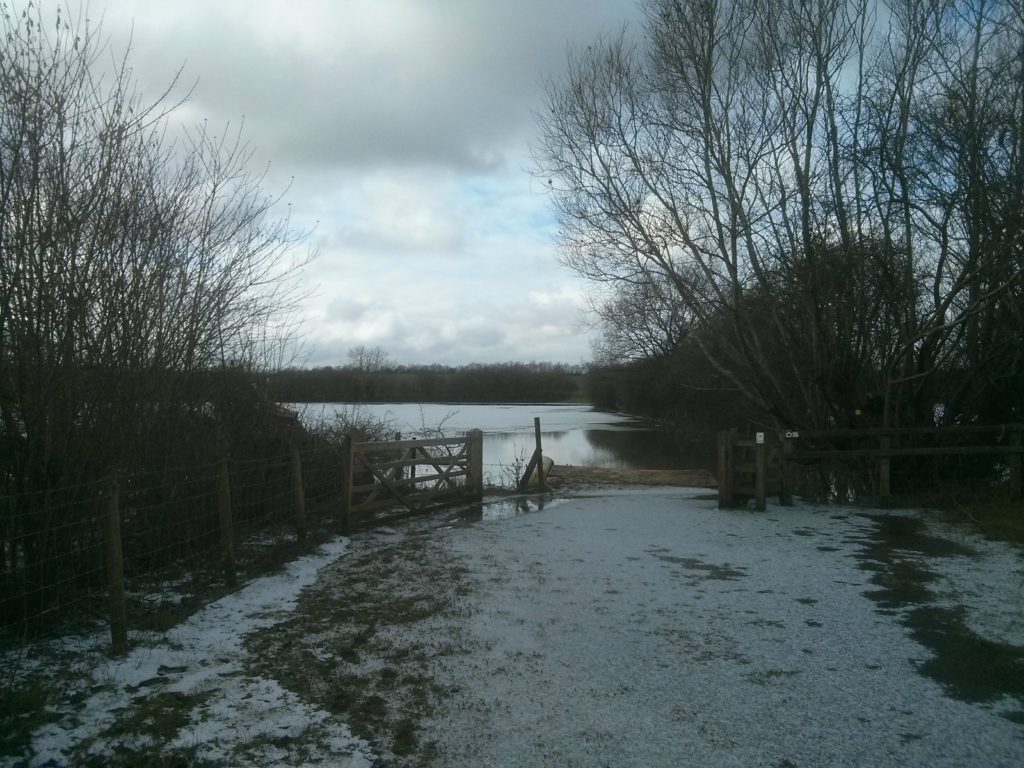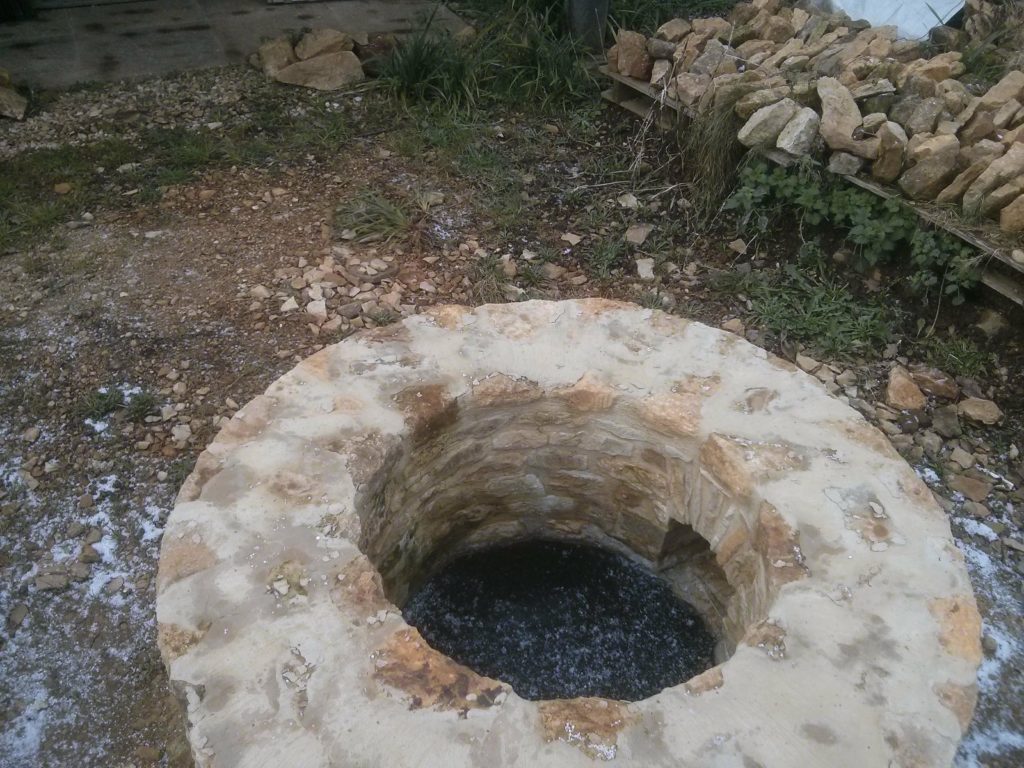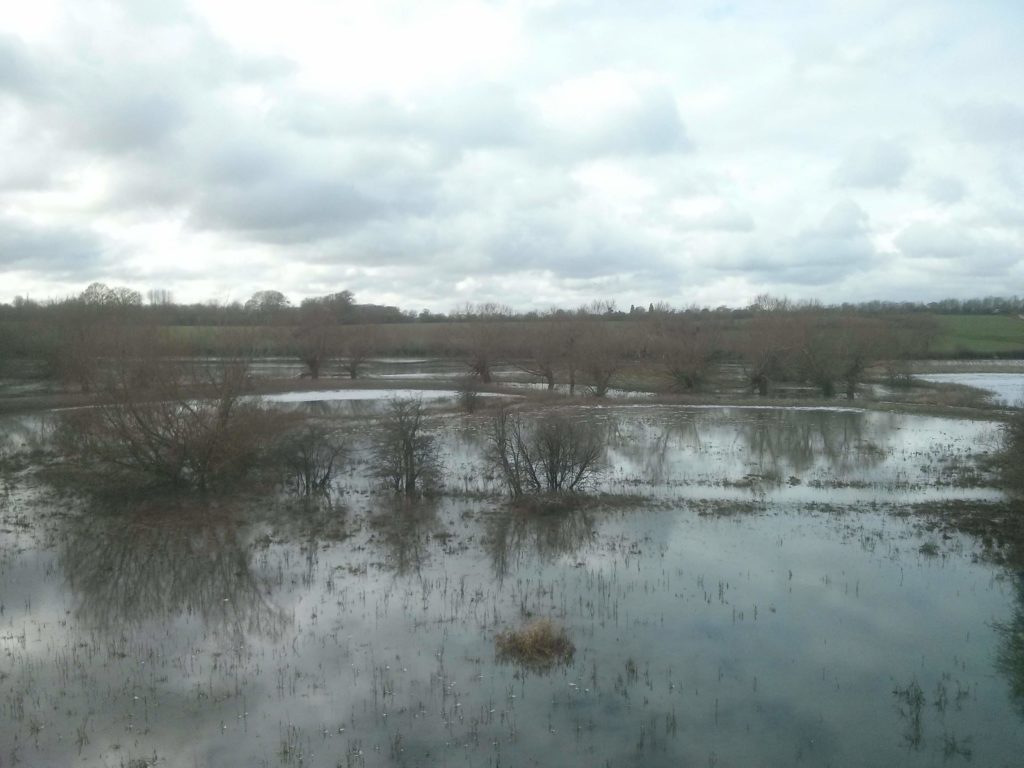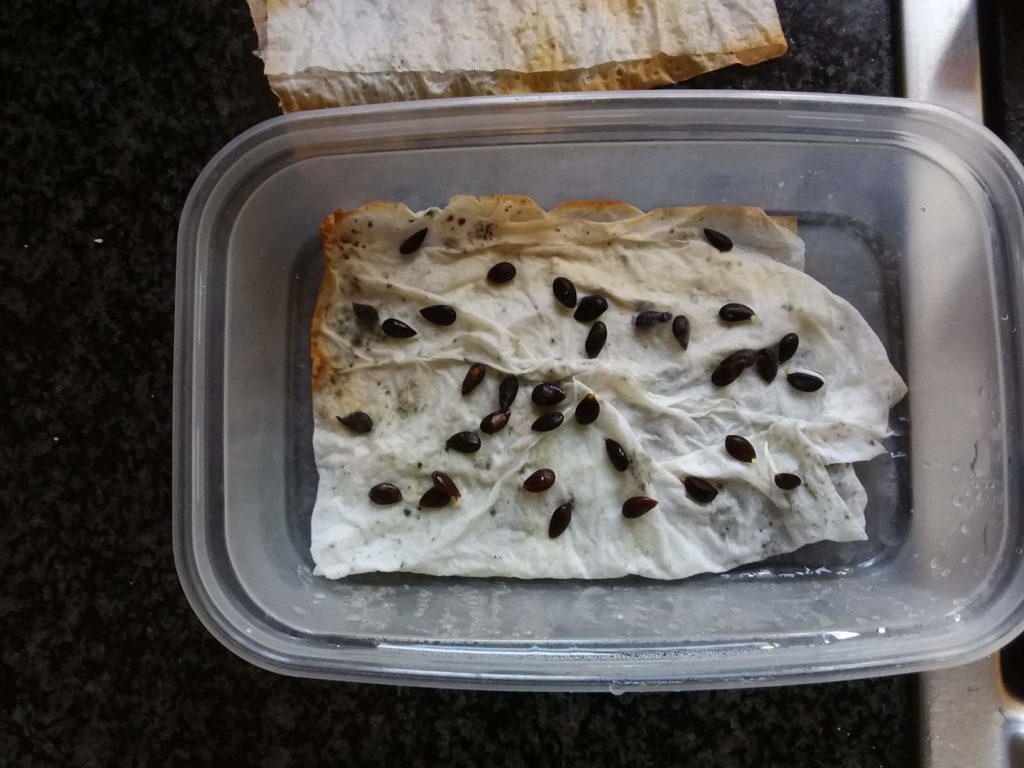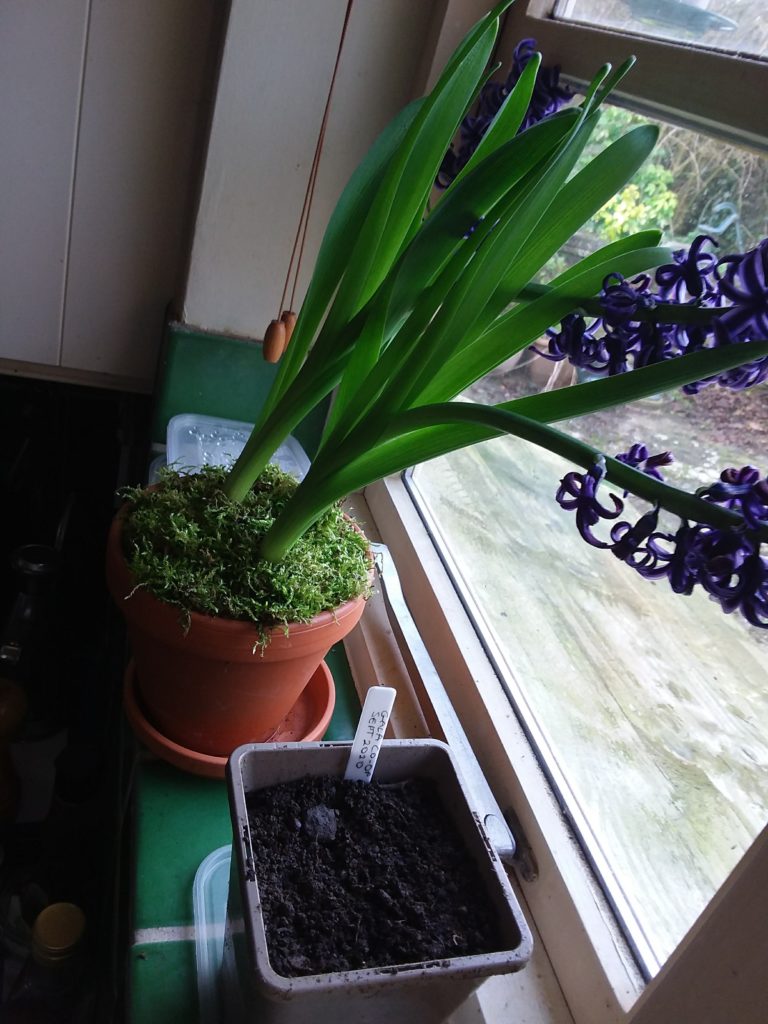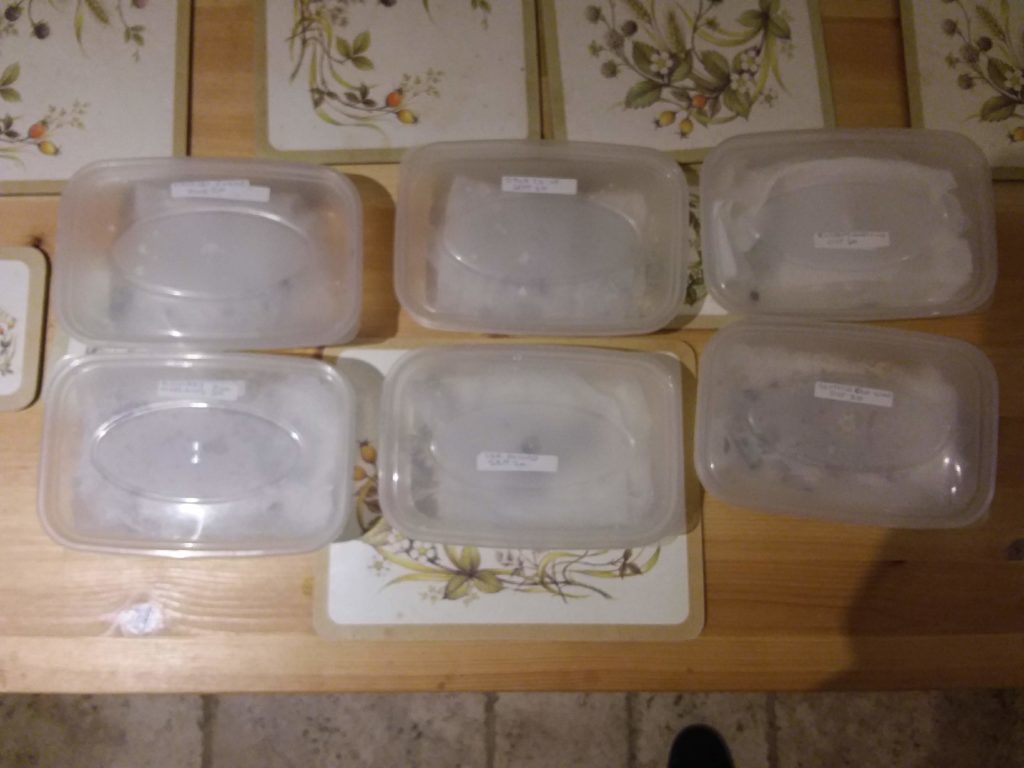I have finally potted all my apple seedlings into individual pots of at least 1 litre capacity. And counted them.
I have 112 seedlings, some tiny, some being munched by various parasites, some growing with great enthusiasm. I lost one seedling to what I think was silverleaf fungus, and disposed of it carefully, but overall it’s a pretty encouraging collection.
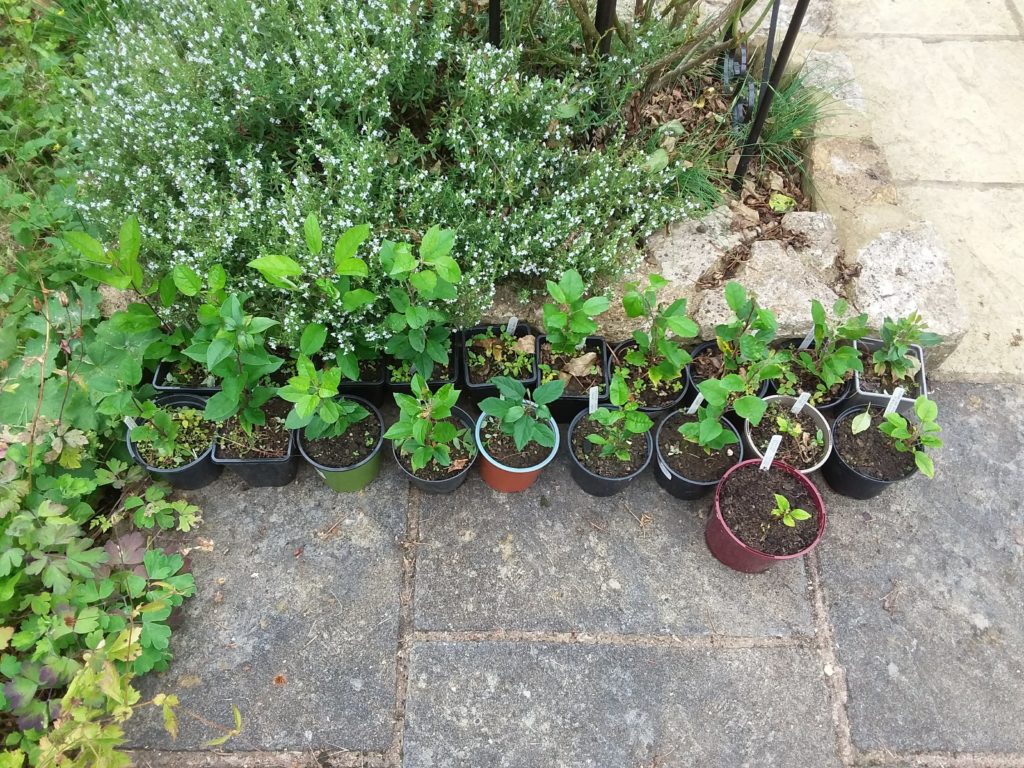
Above, the back row is from apples that I found in a box outside somebody’s house in the nearby village of Aynho, labelled as Cox’s. The front row is seedlings from the tree behind the forge at Murton Park (Yorkshire Museum of Farming). Some I grew from apples that I collected last August (2020) and kept while the apples ripened – I am amazed how many germinated. Some I found as seedlings in the “village brown” and area around the tree. The tree itself was badly damaged in a fire last winter which burned down the forge and fence; the tree was alive in April but I don’t know if they’ll keep it or replace it. So I’m very happy to have scions, especially as the tree produces very tasty early apples.
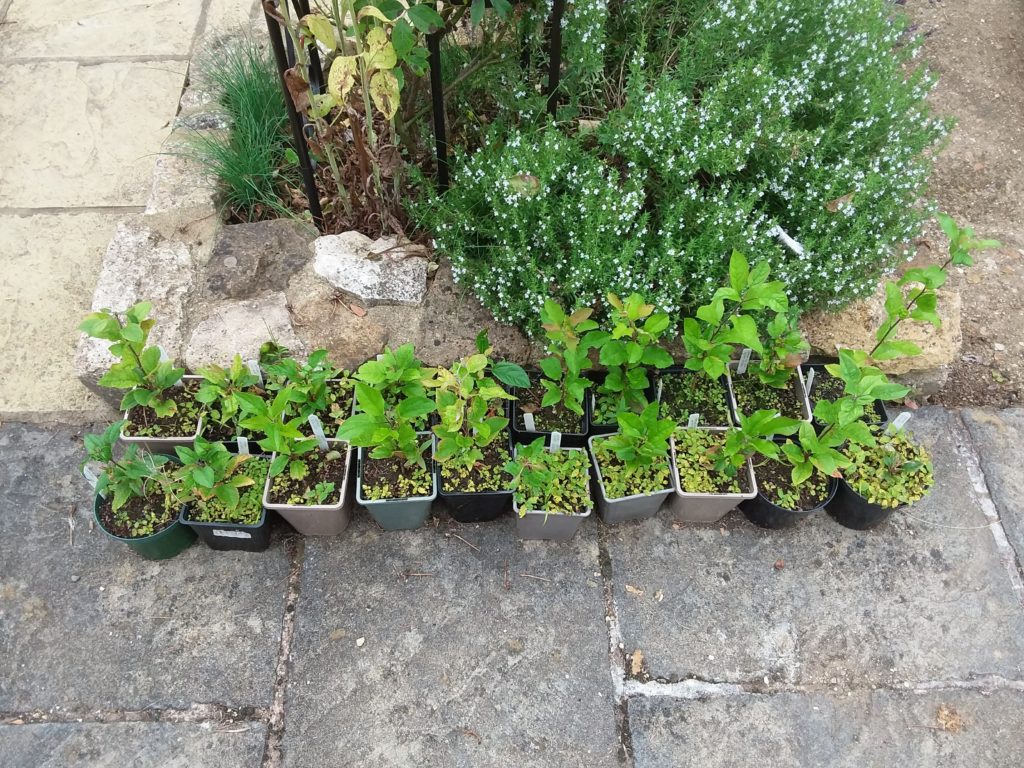
Above we have the Royal Gala seedlings, grown from apples that I bought in the supermarket.
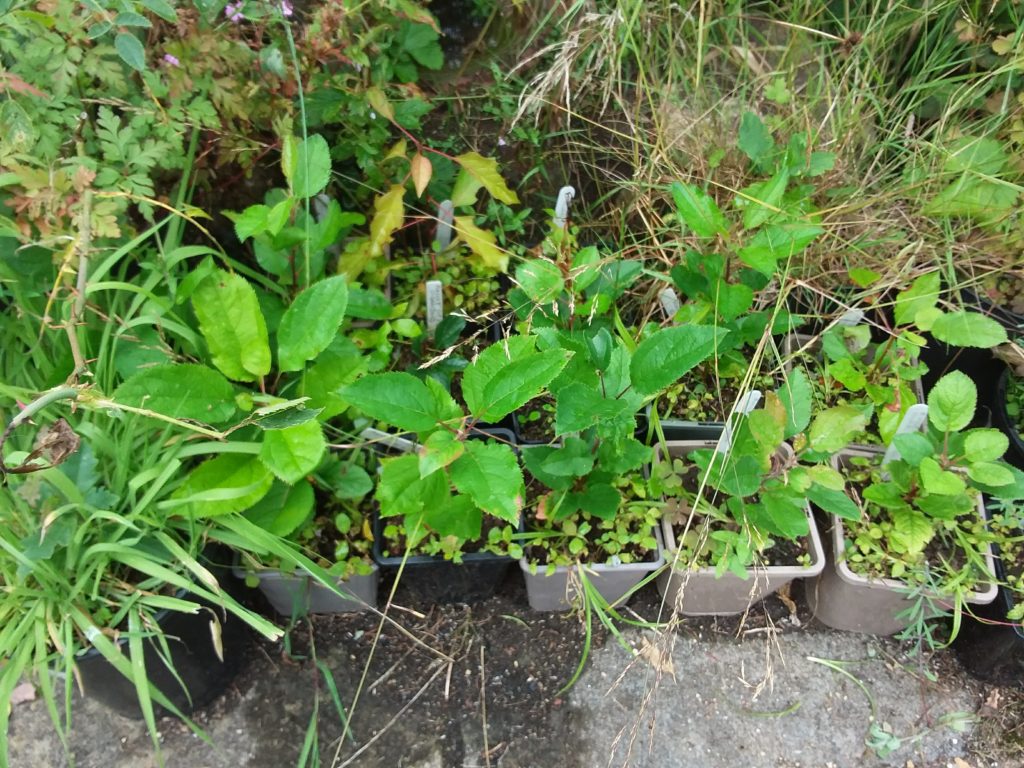
Next up (above) are the Egremont Russets, an English apple bought in Morrisons. Two at the back seem to be dying but the rest look pretty good.
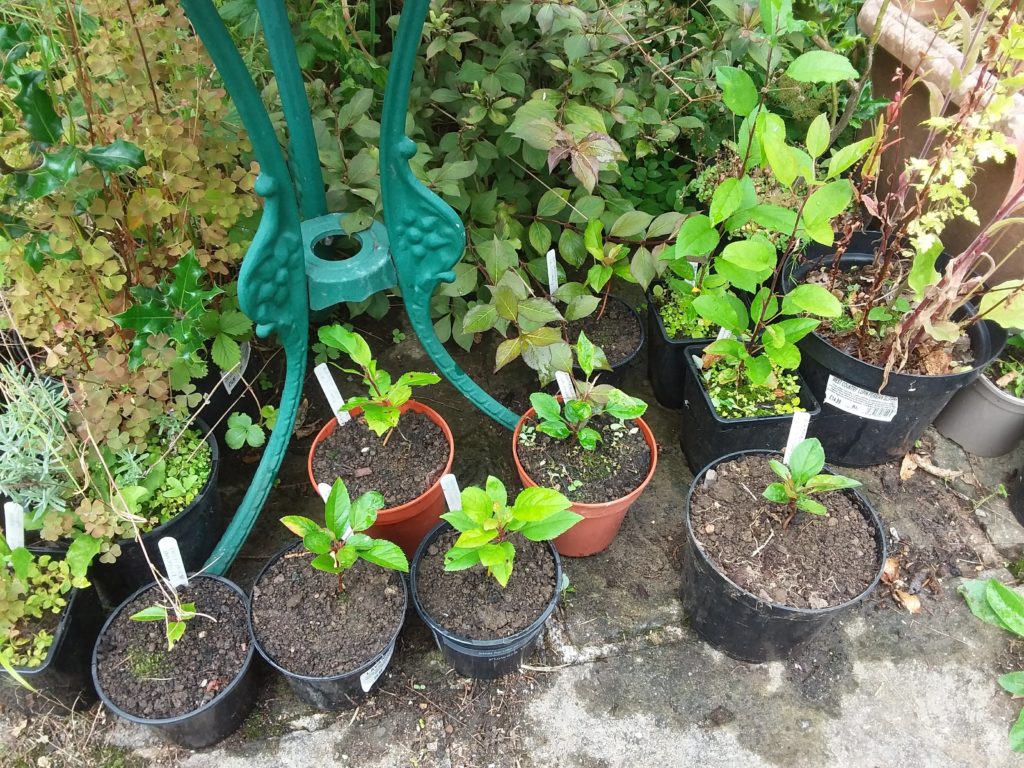
Braeburns (above) again from supermarkets. The larger ones were planted last year, from seeds which had germinated inside the apple – I assume false winter experienced while being shipped in cold storage. The one at the far left is a mystery seedling which I found growing in the patio. It looked very much like an apple seedling but is now developing rather shinier leaves, so I’m going to have to wait and see what it is really!
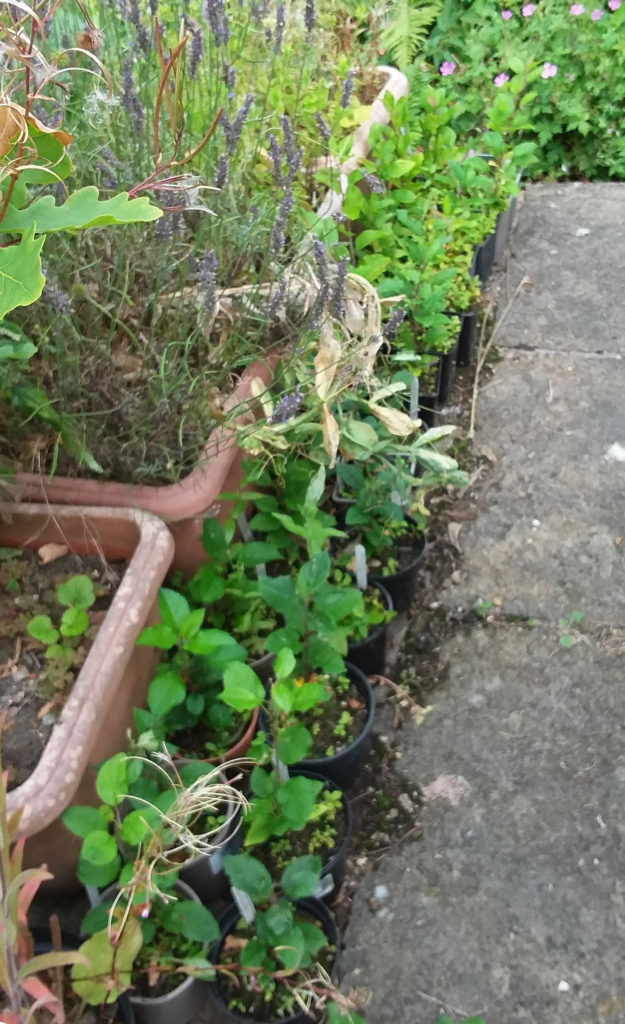
My friend Emma brought me “Cox like” apples from Kittyfields orchard near her home in Galashiels. Above and below – they proved very enthusiastic!
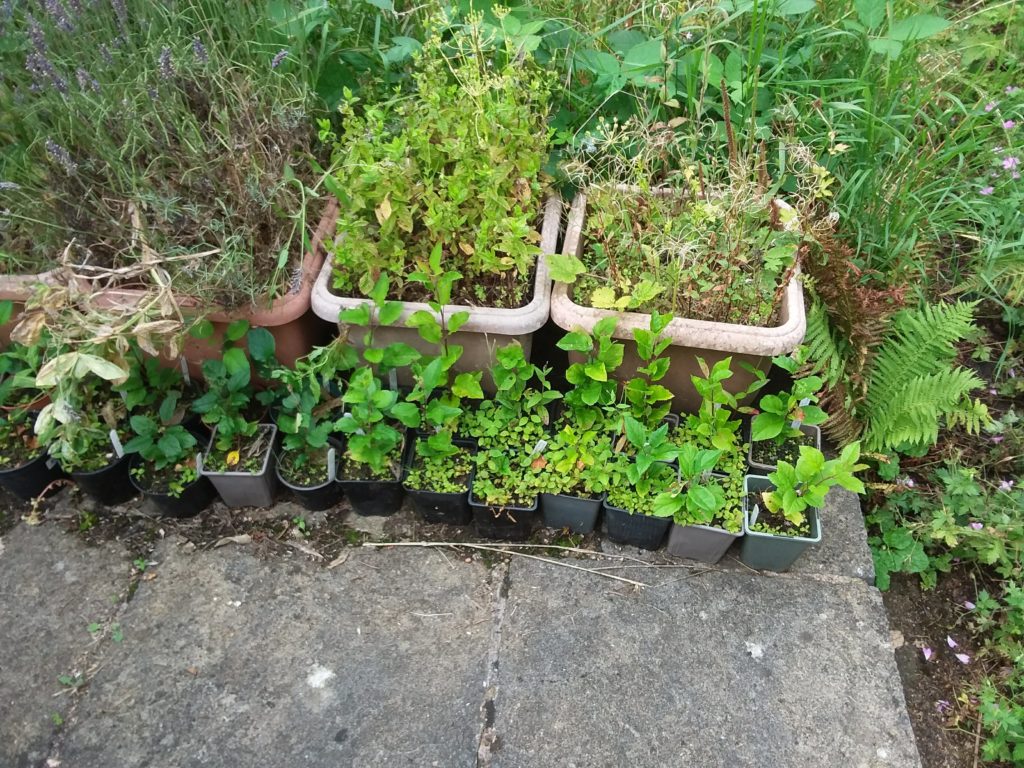
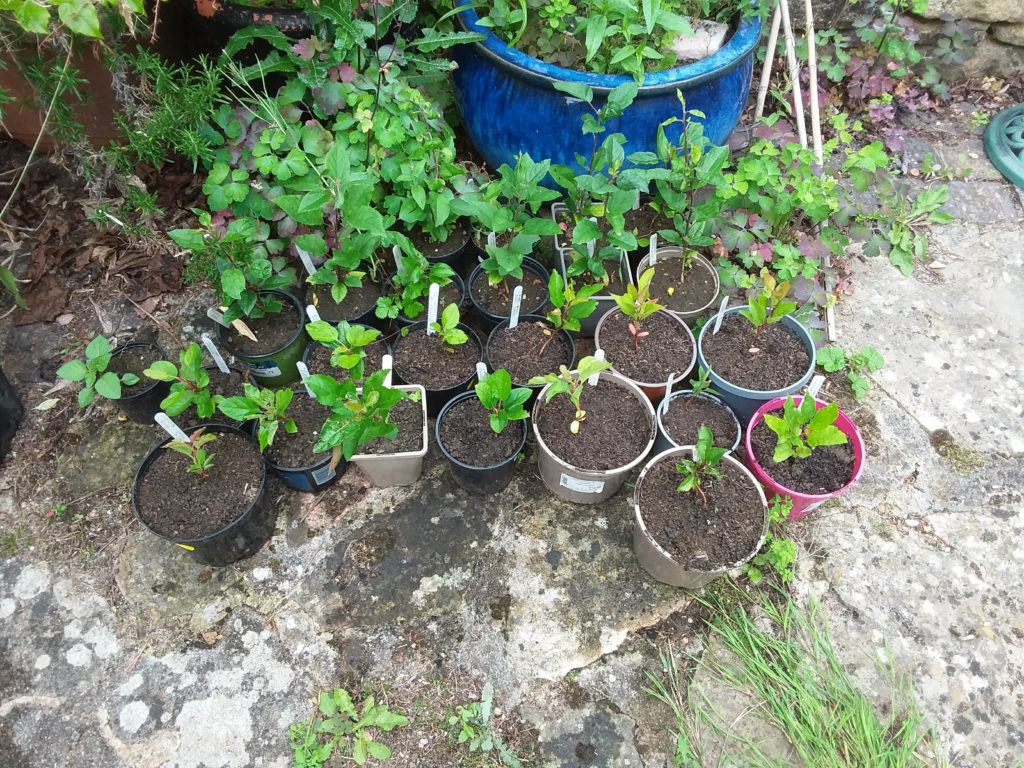
And finally, at the back are the Discoveries, and the front are Cripps Red which are bonus apples – the others are mostly ones I gathered in autumn 2020 and refrigerated for a month before germinating them. The Cripps Reds are all seeds that I found already germinating inside my breakfast apples in spring 2021.
